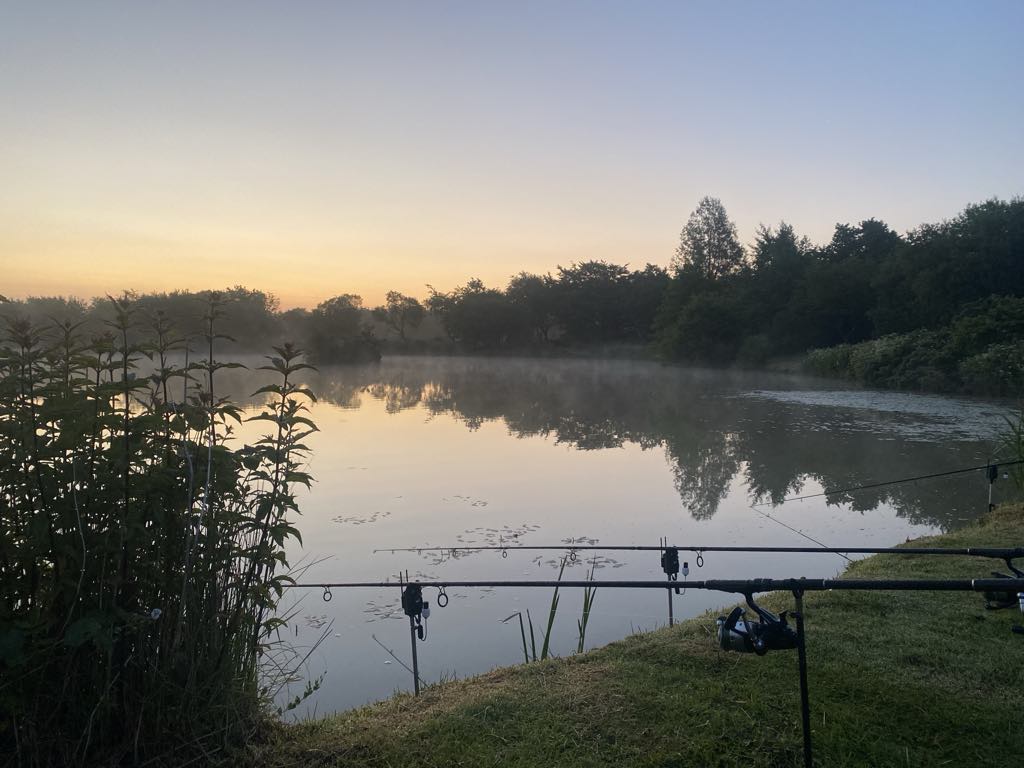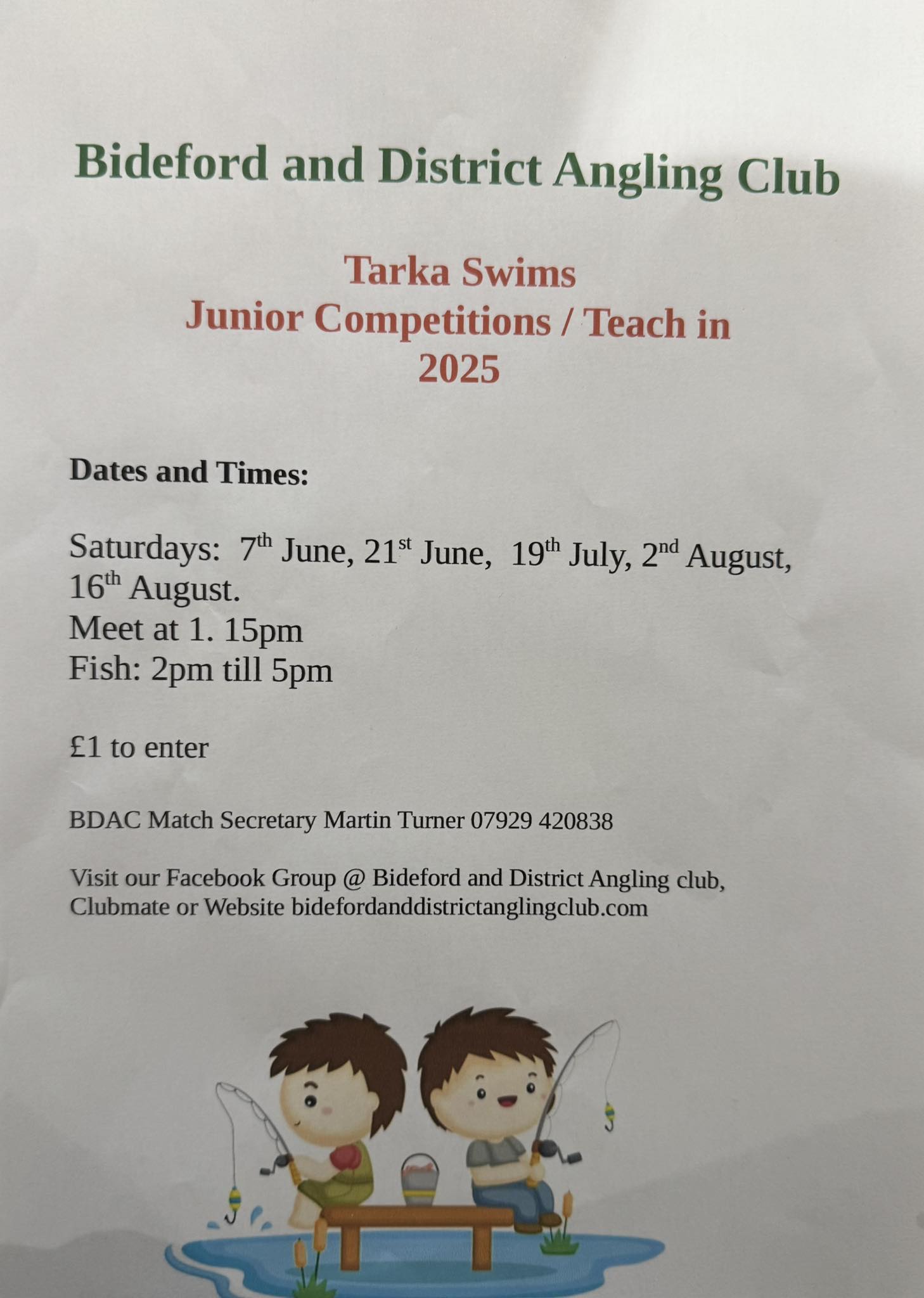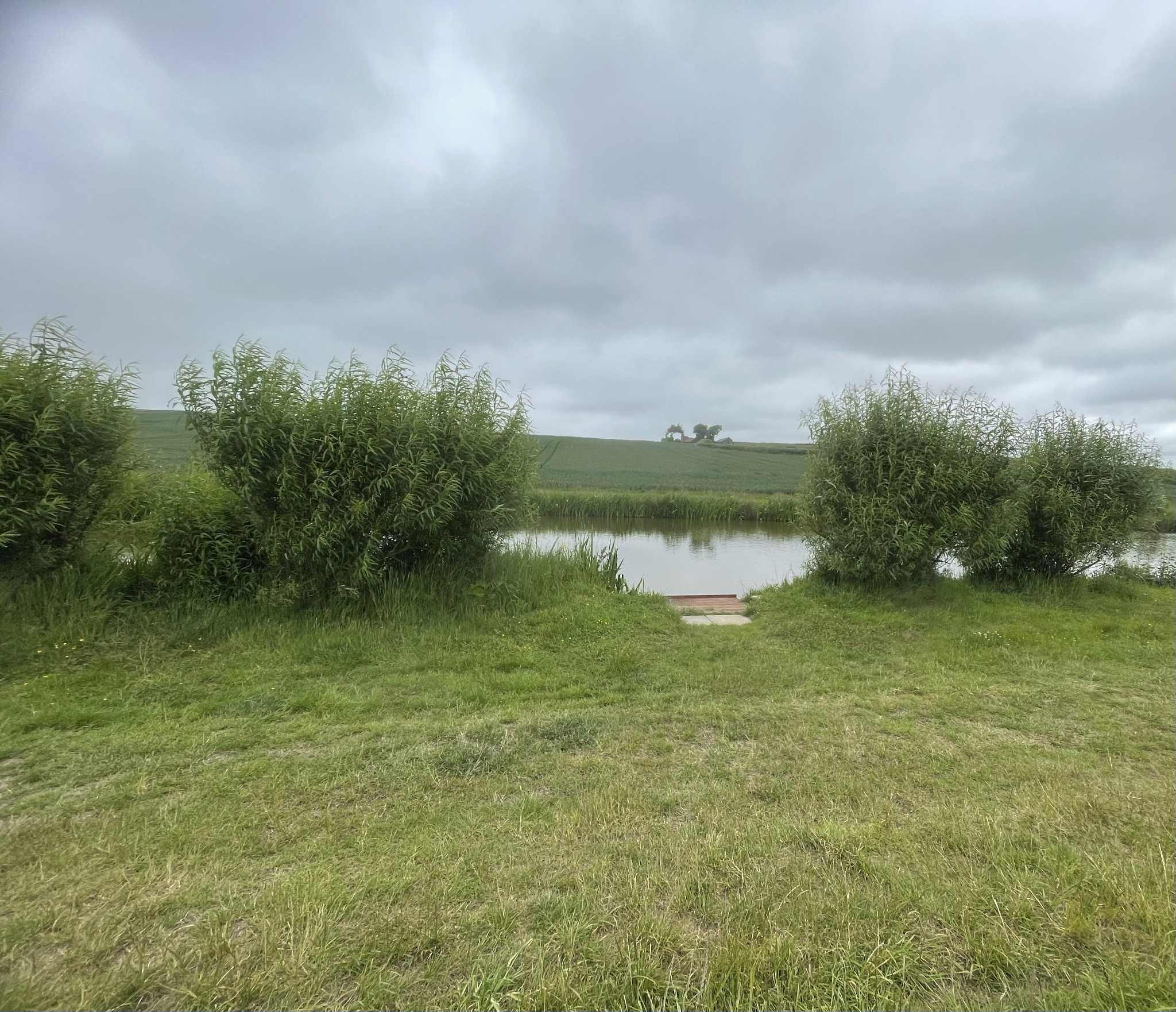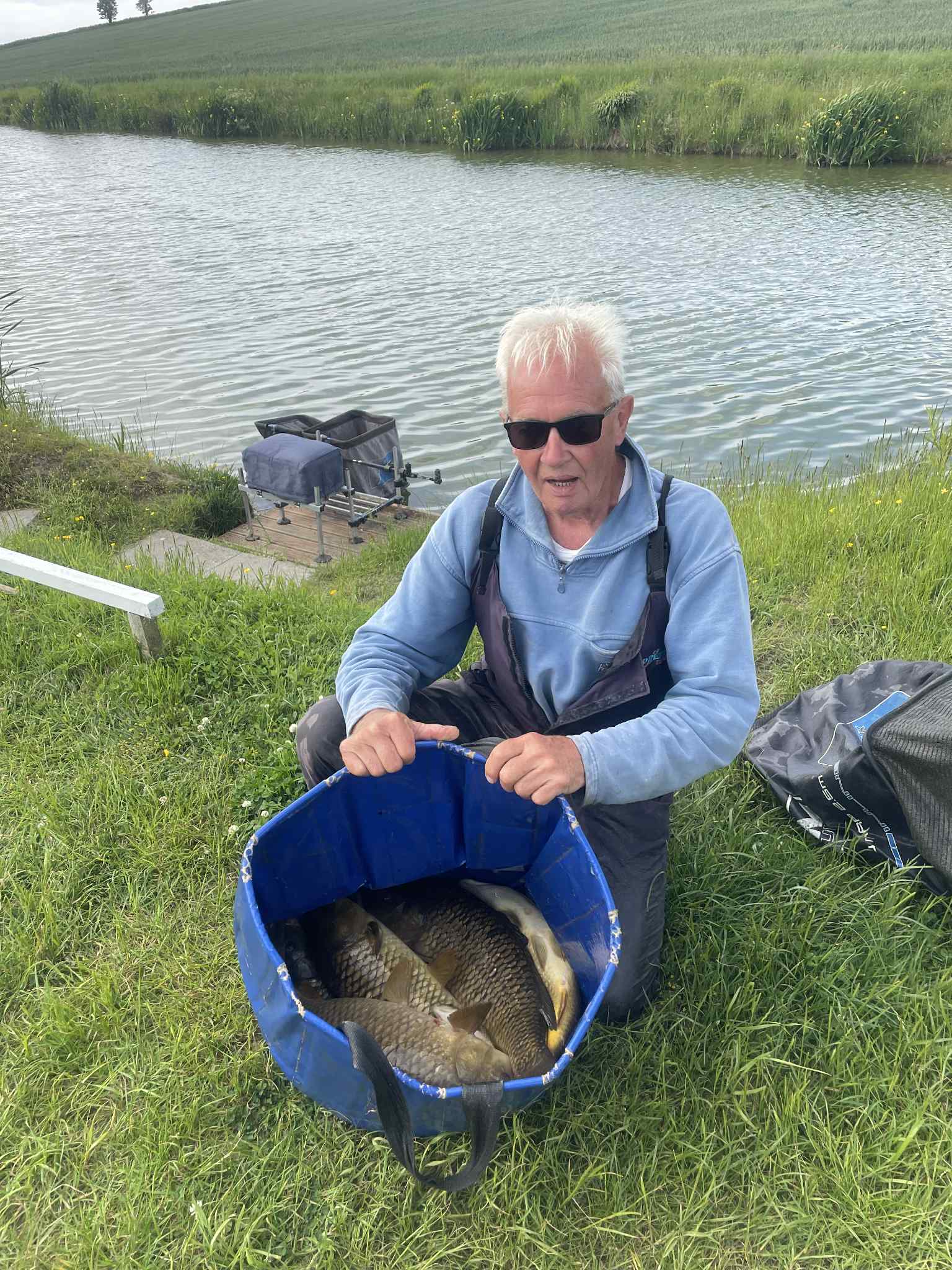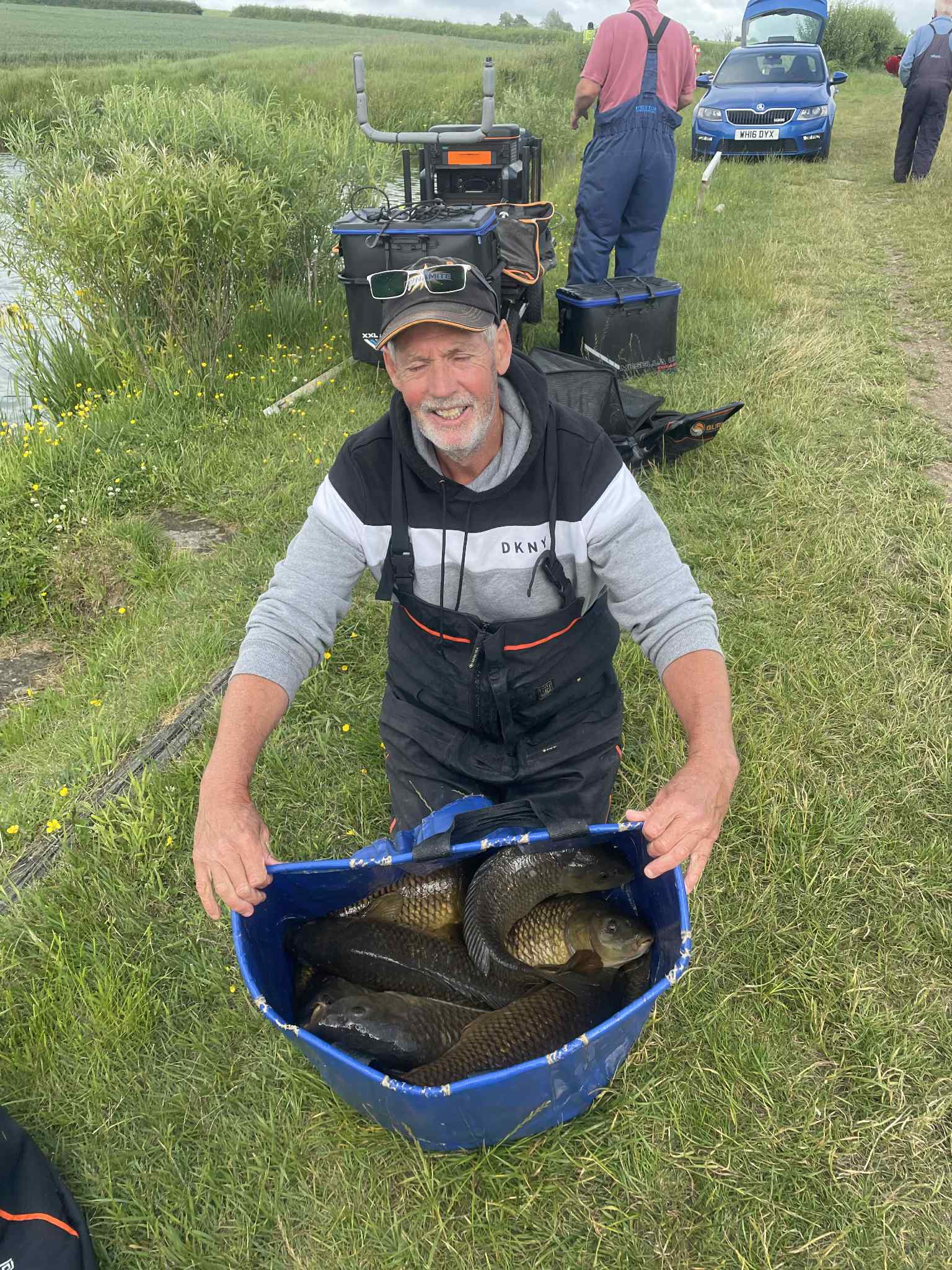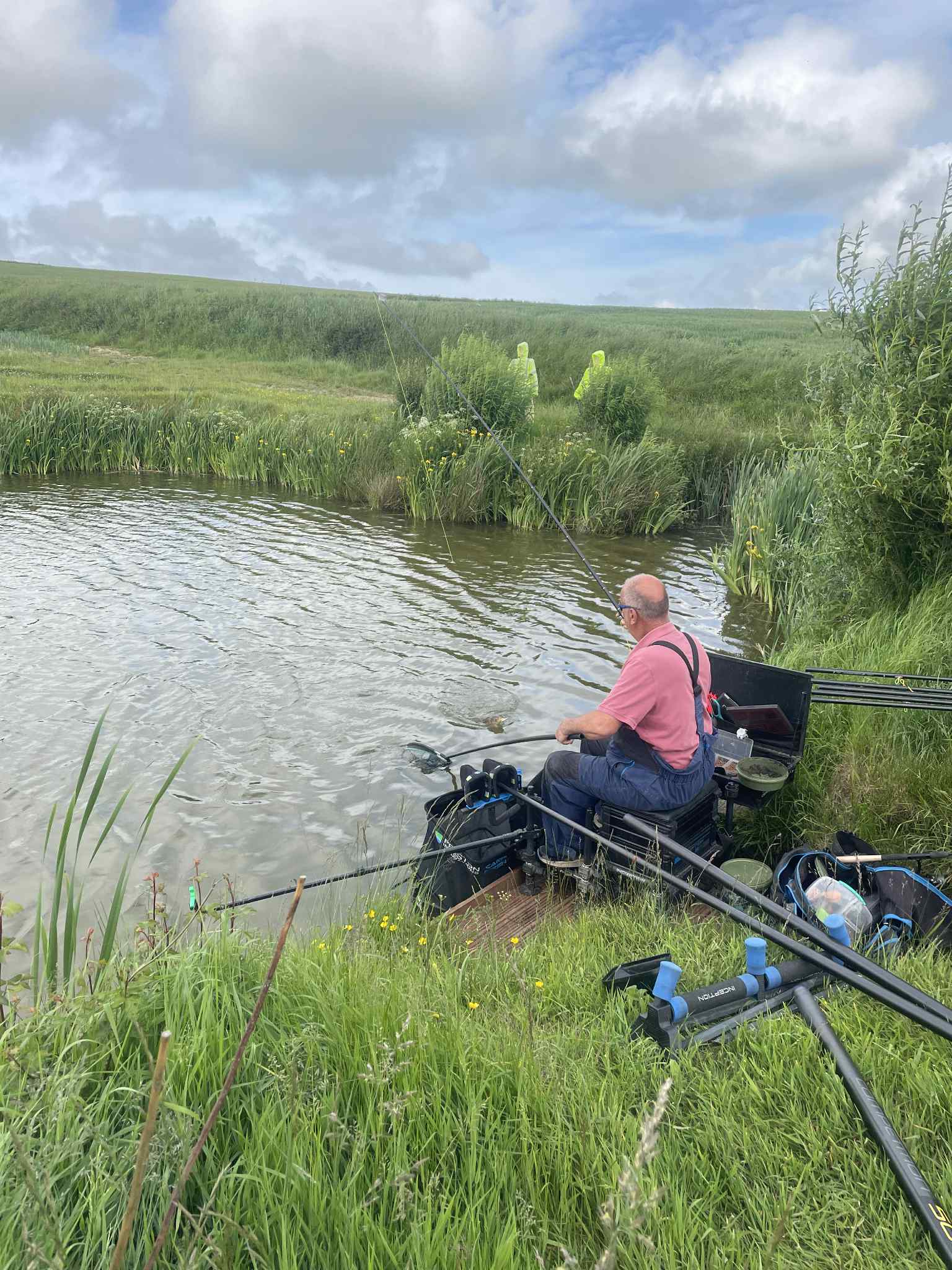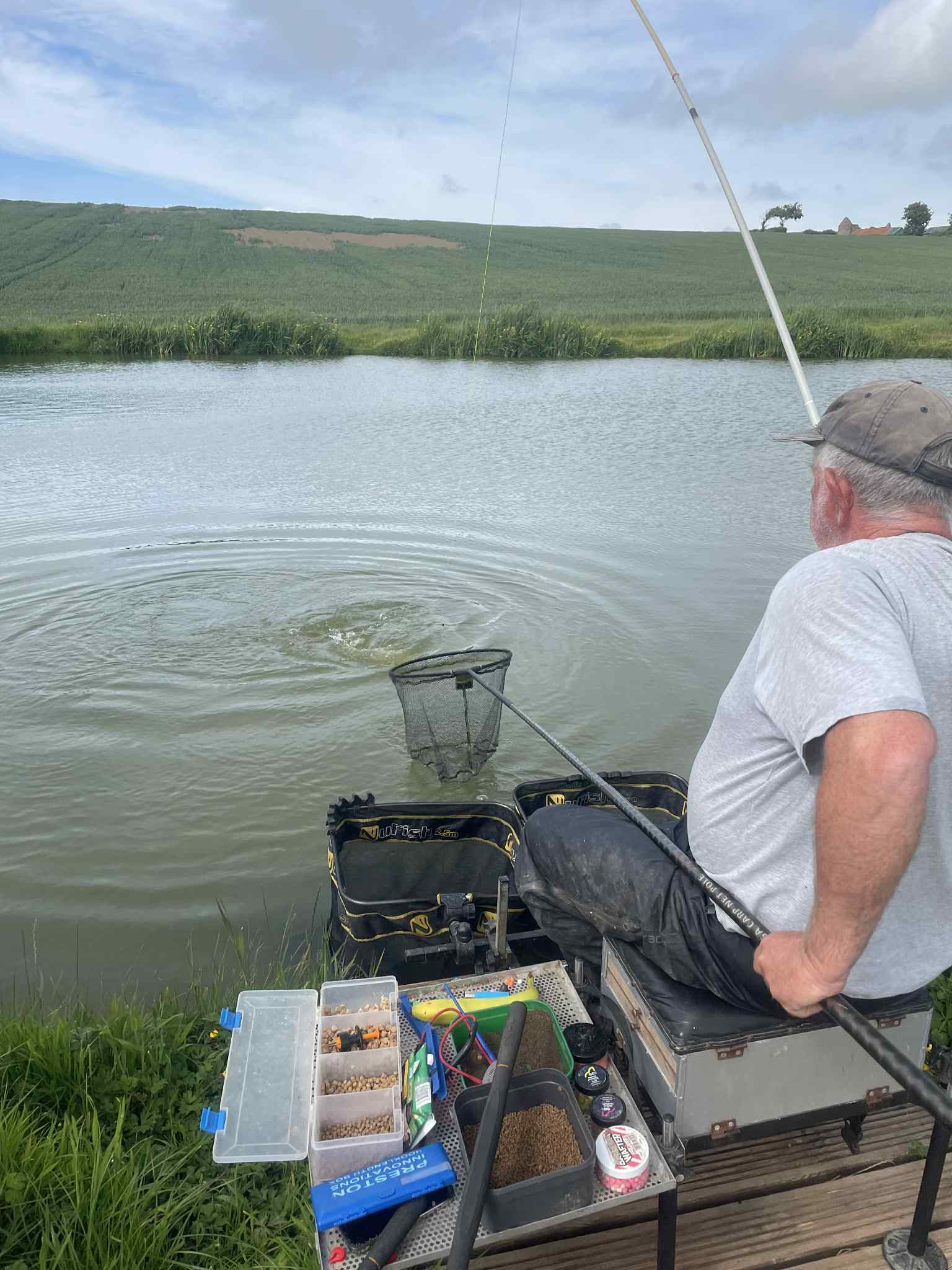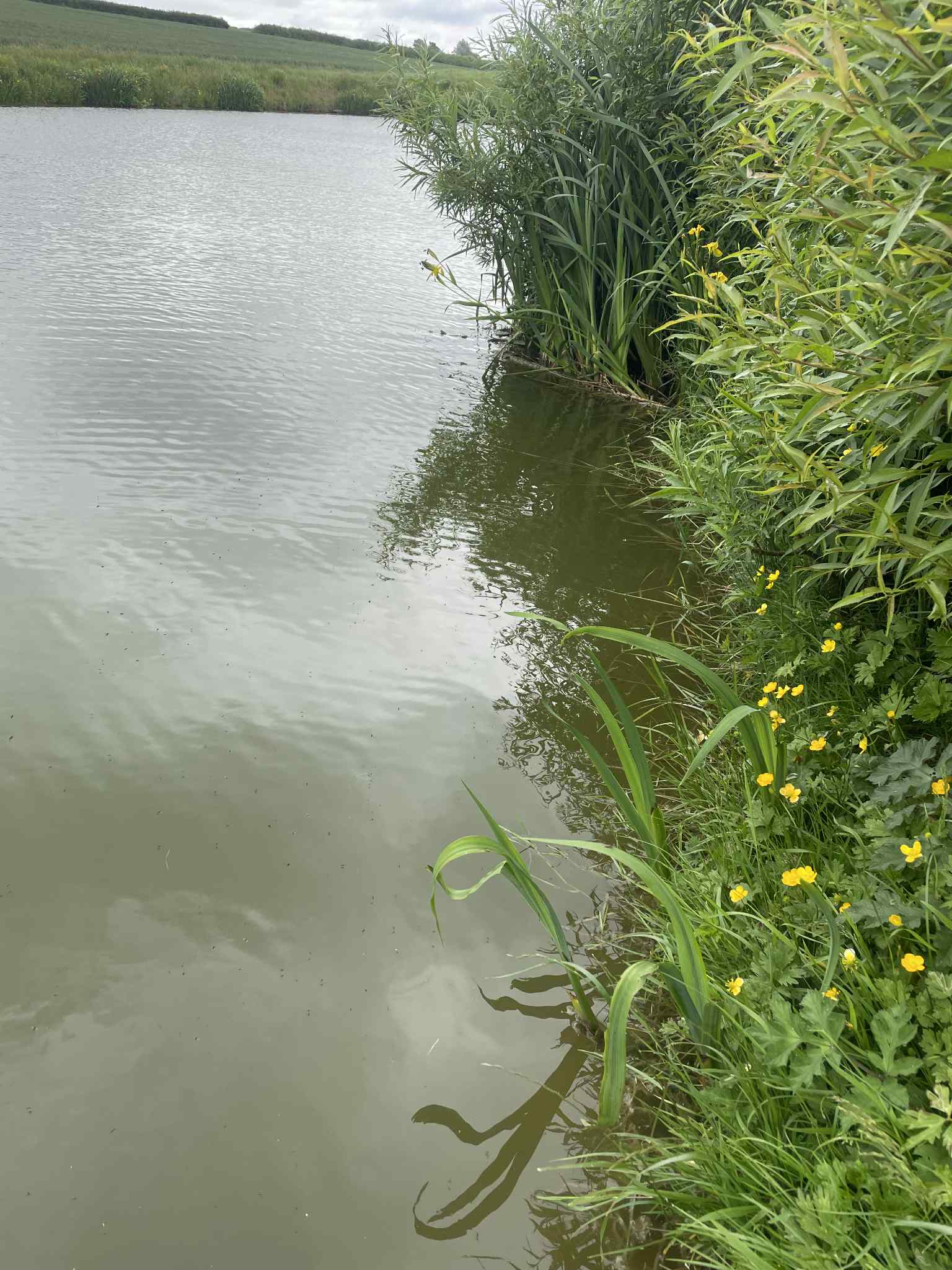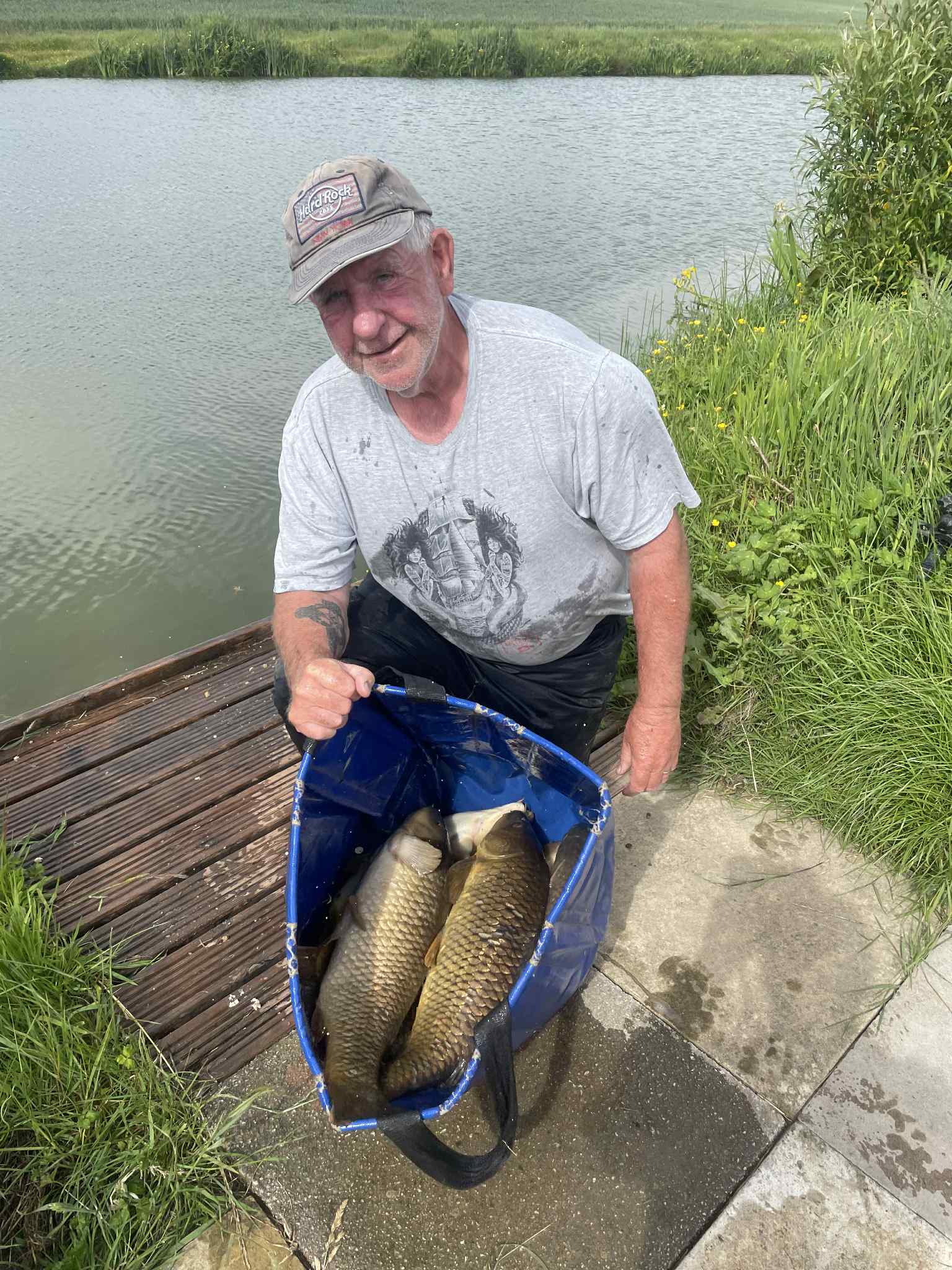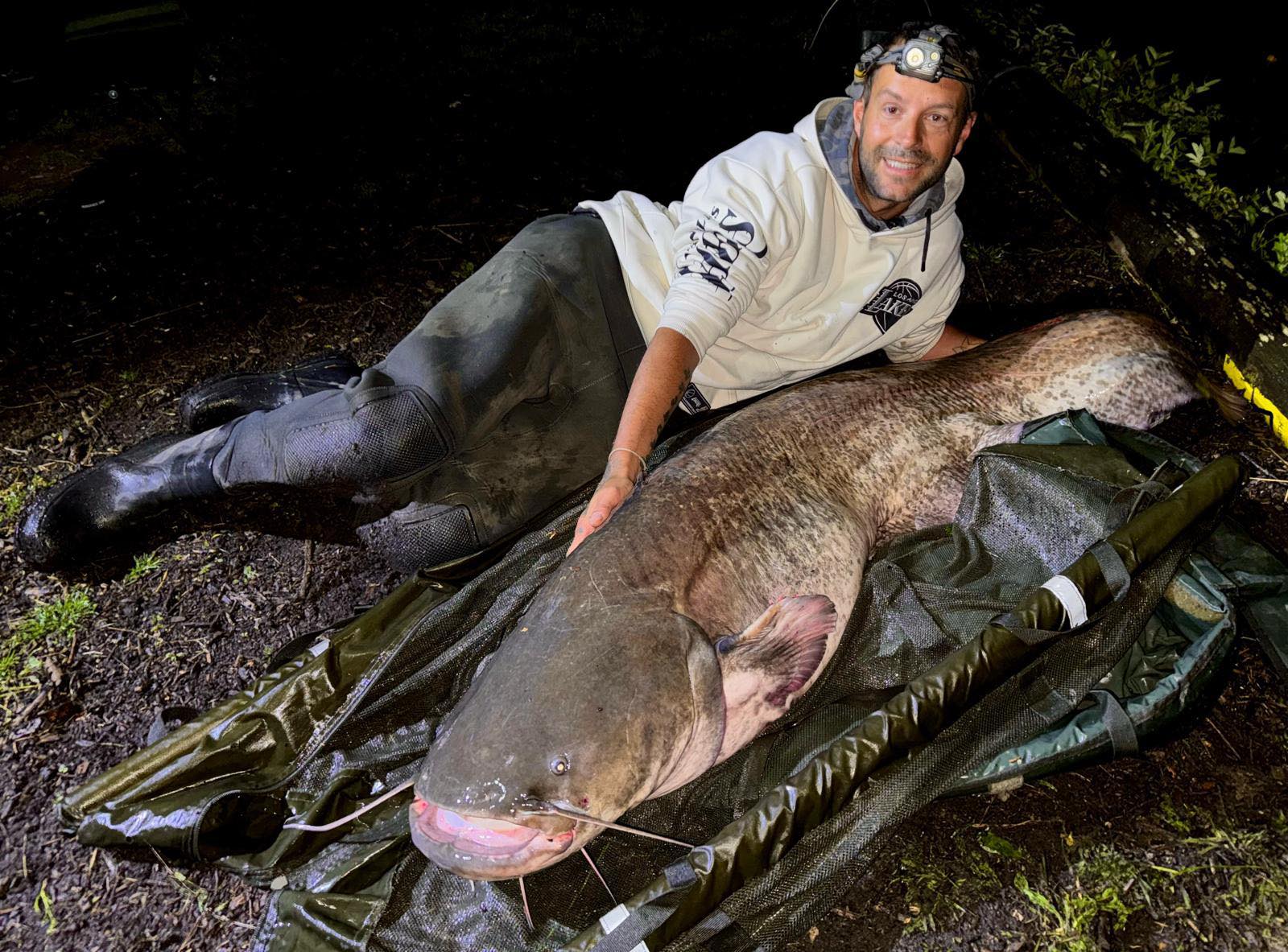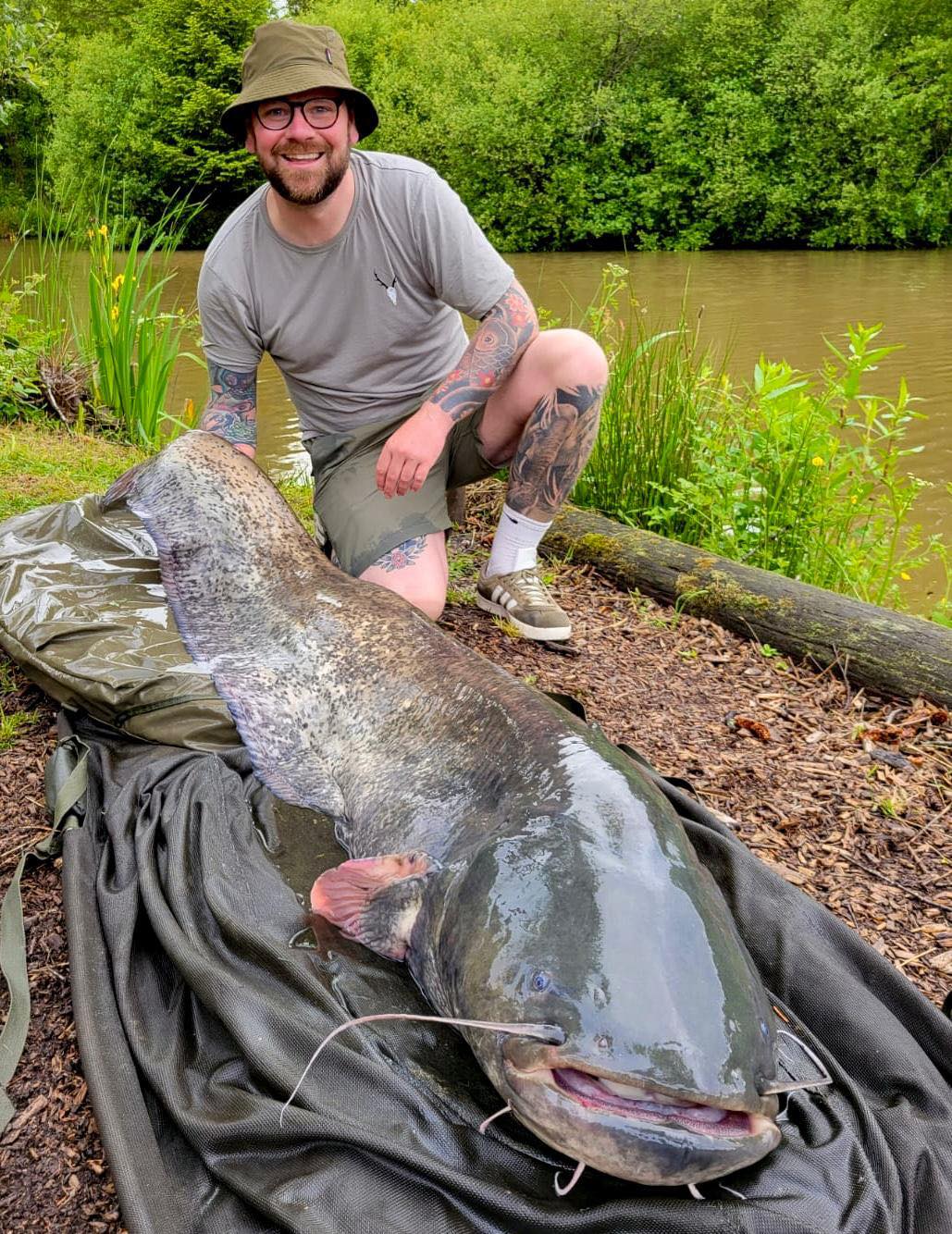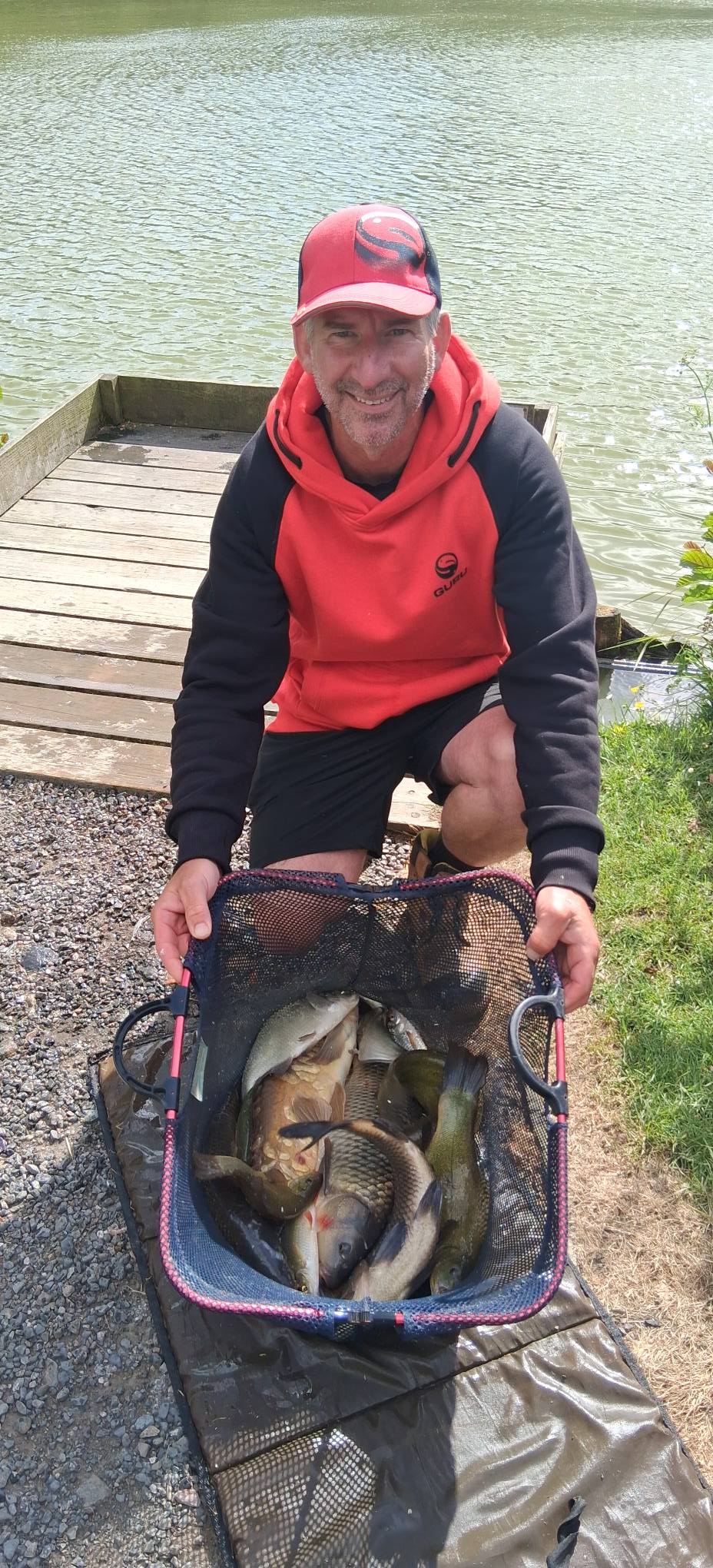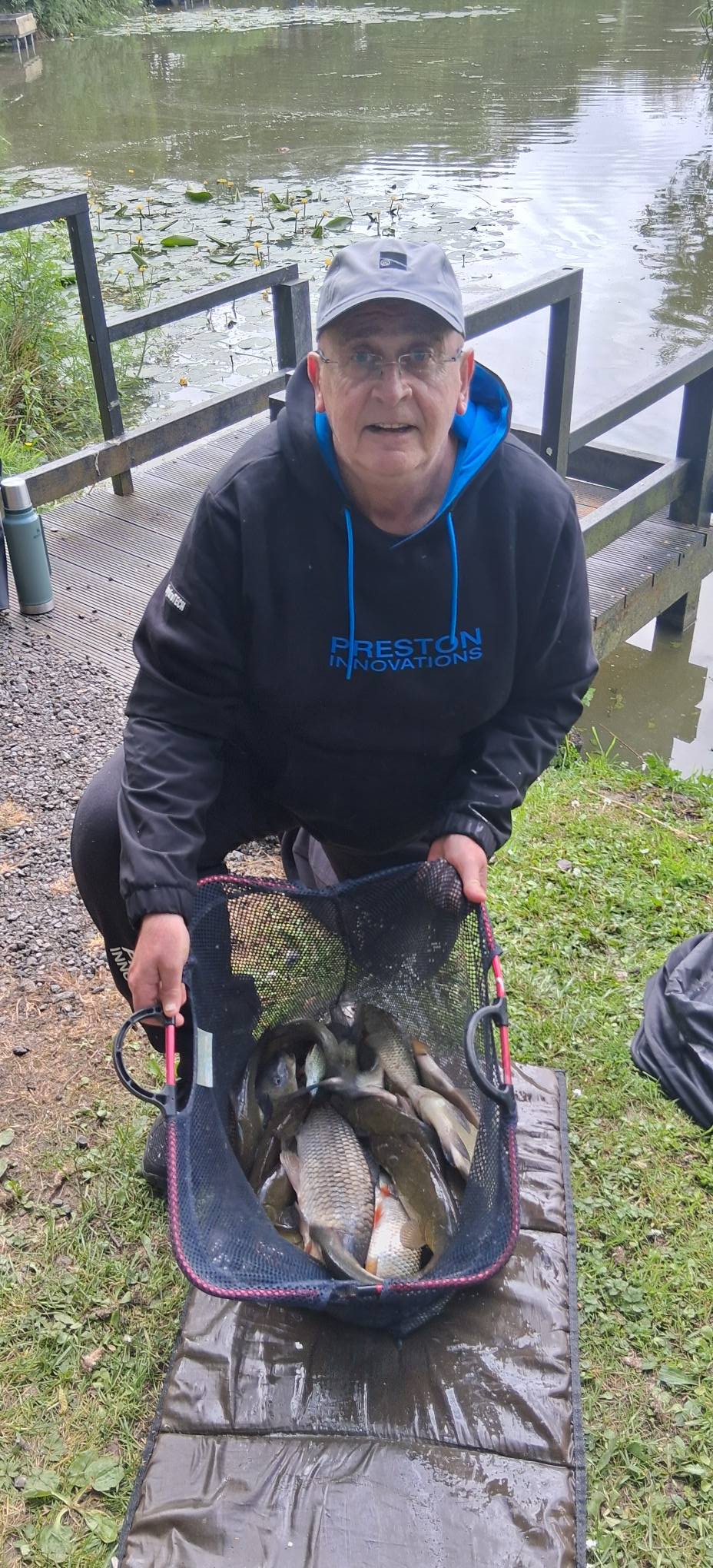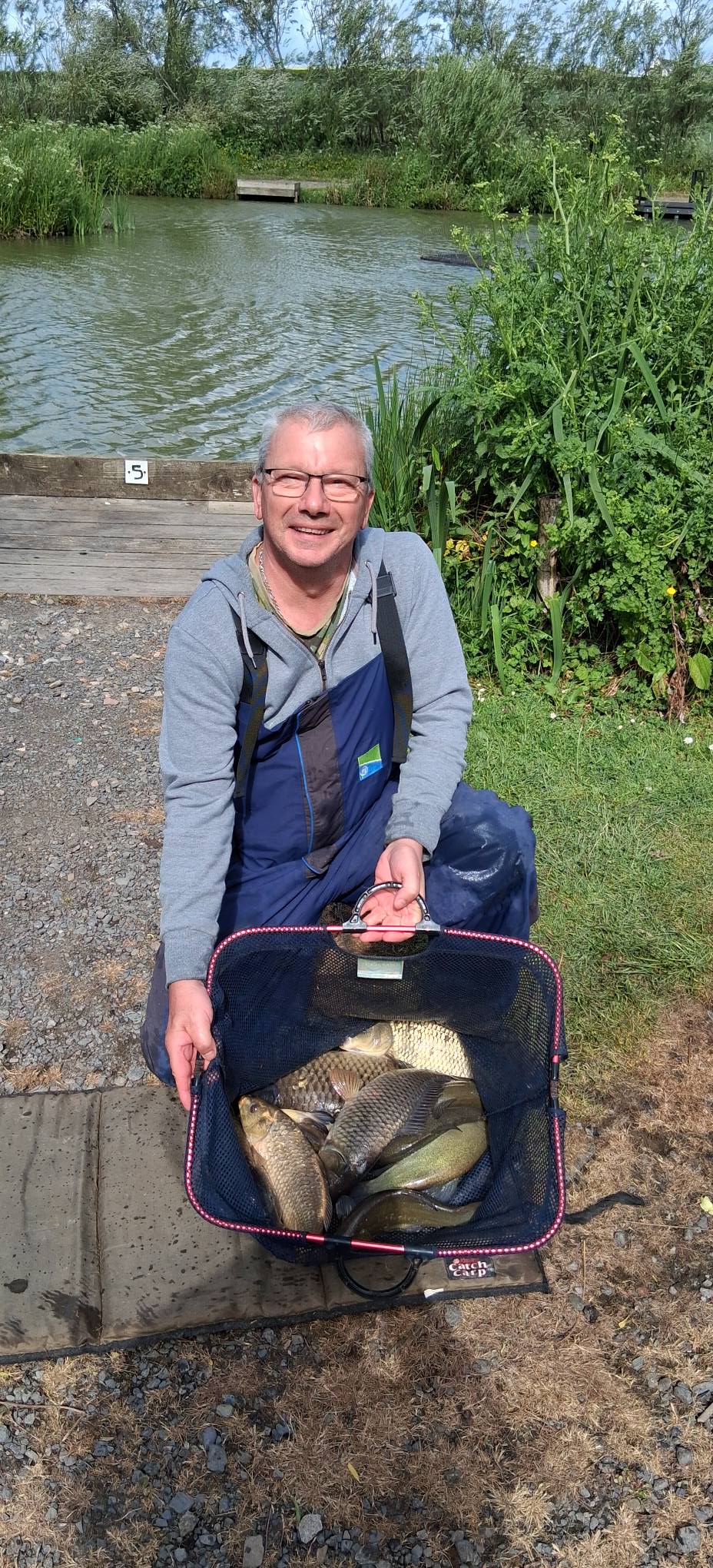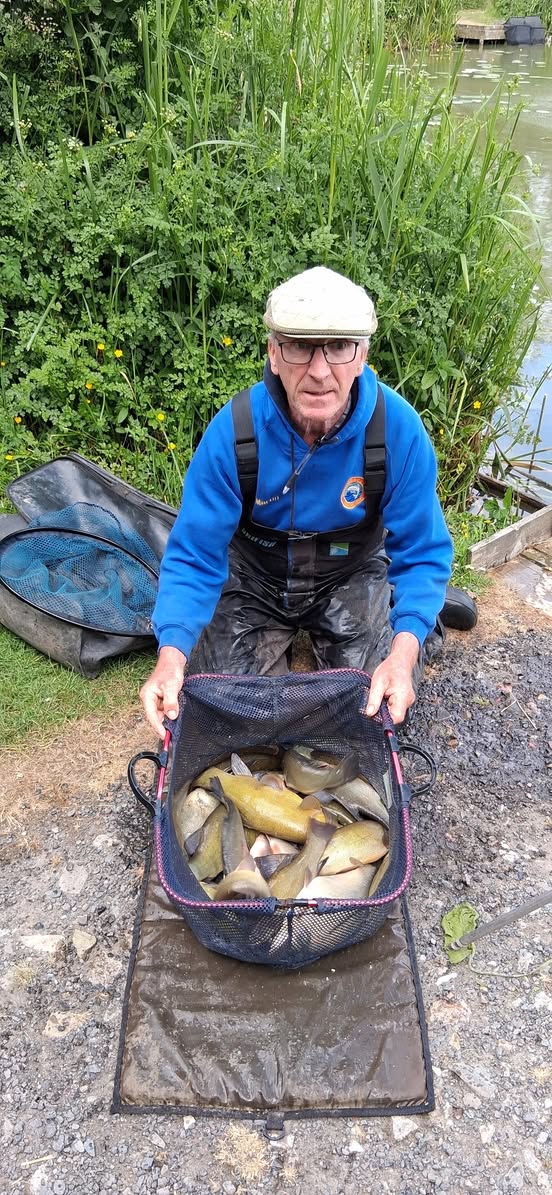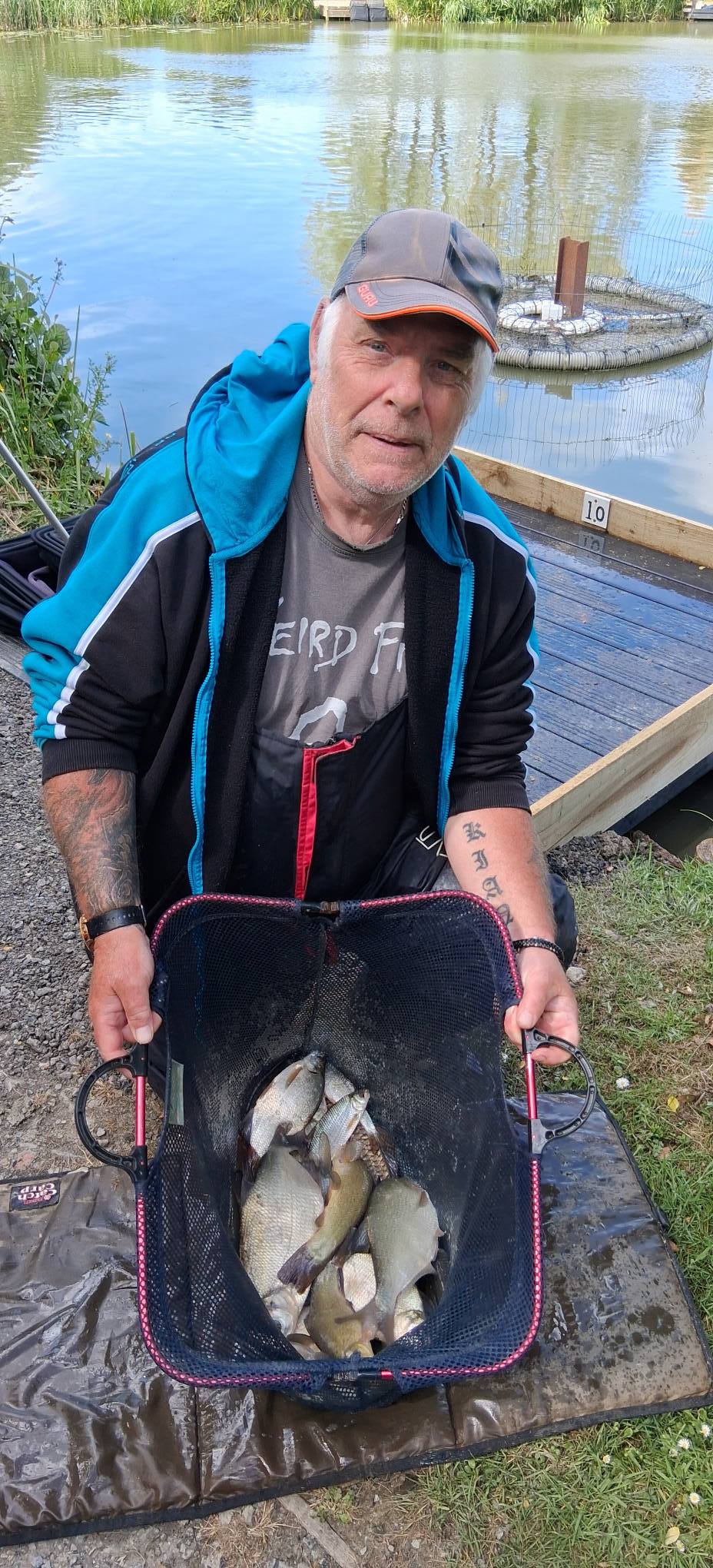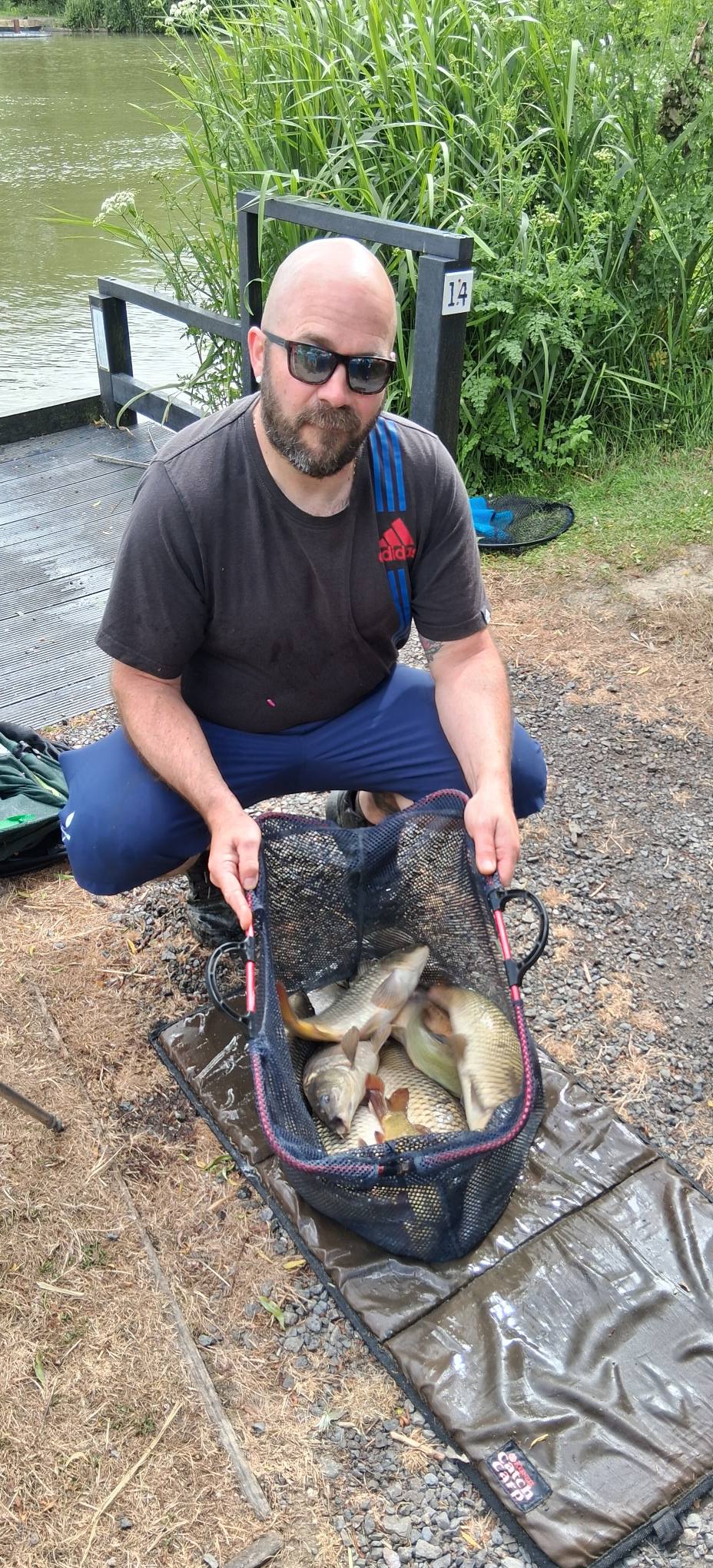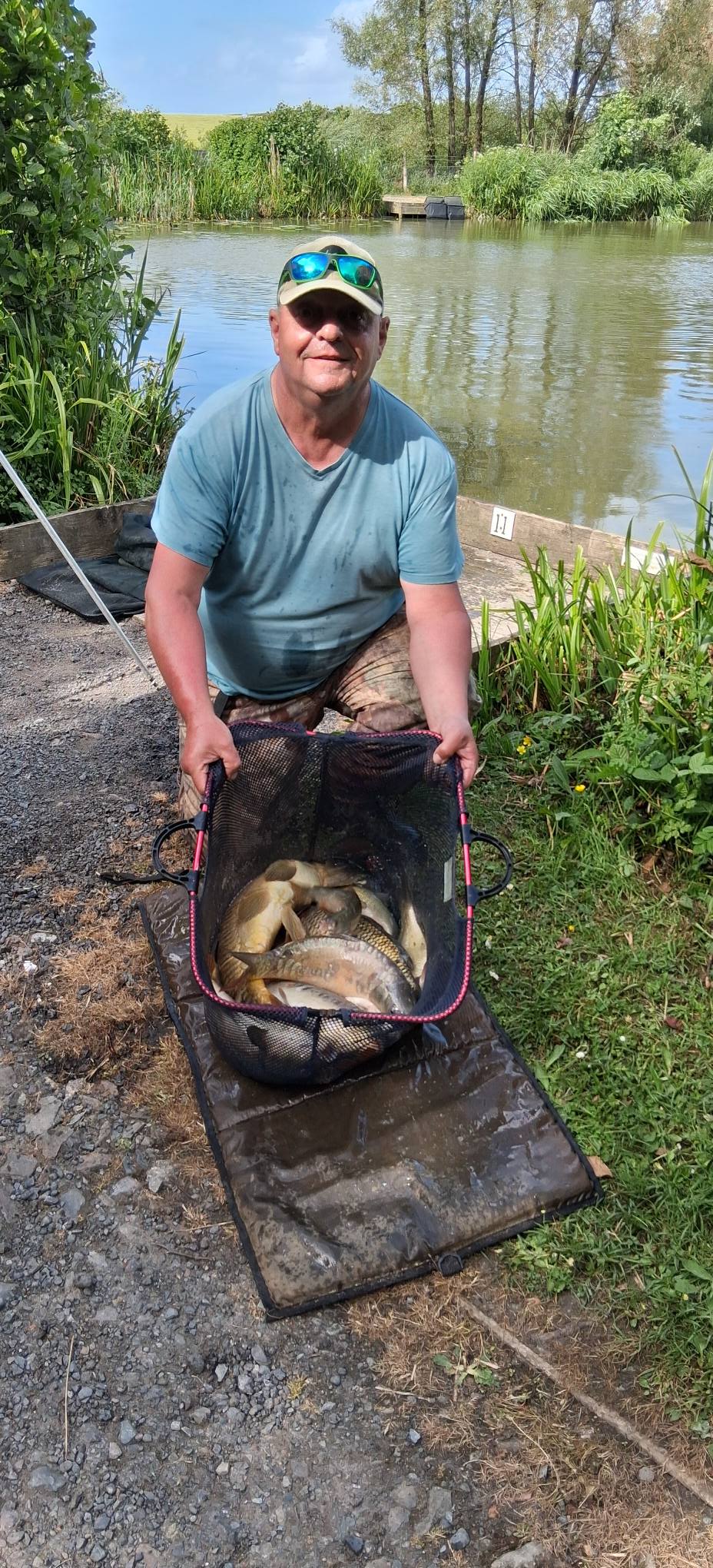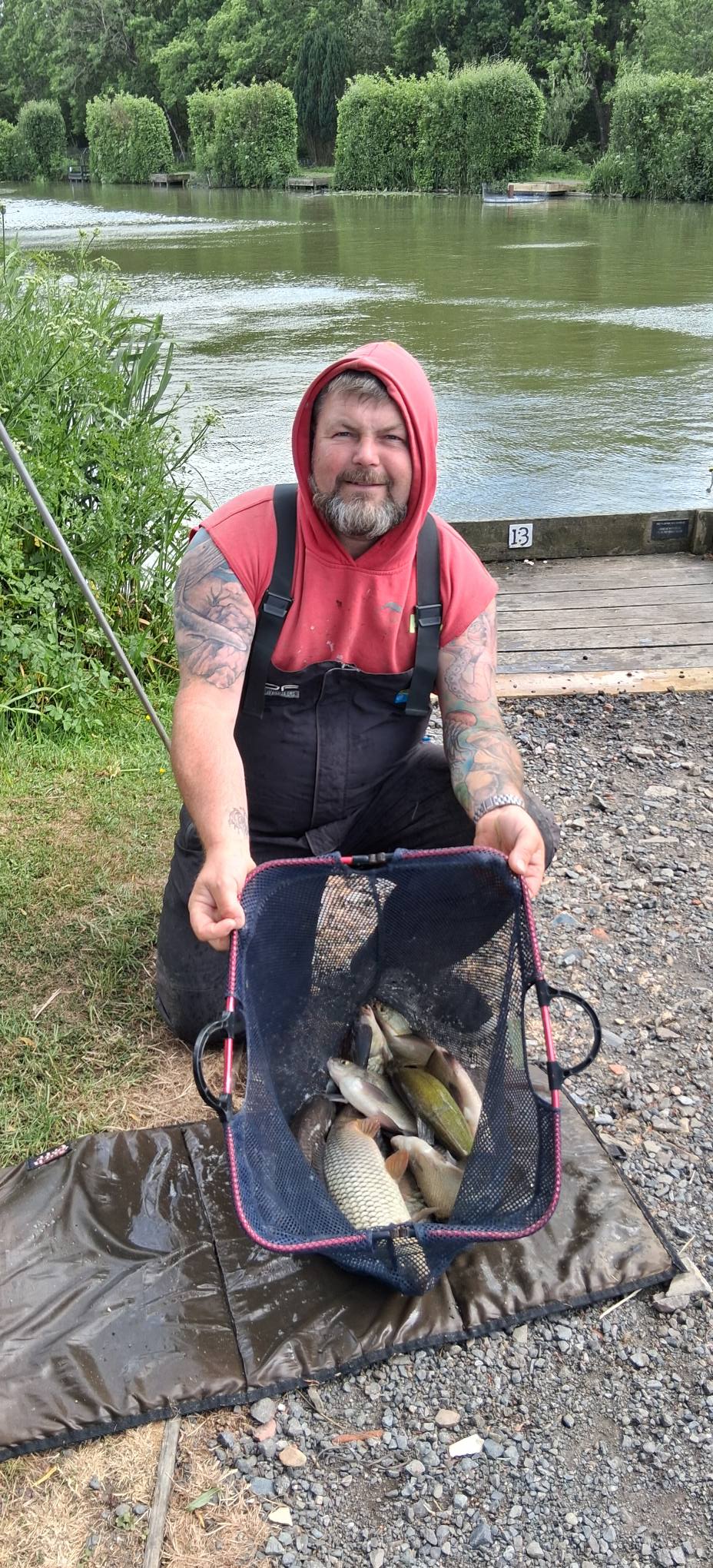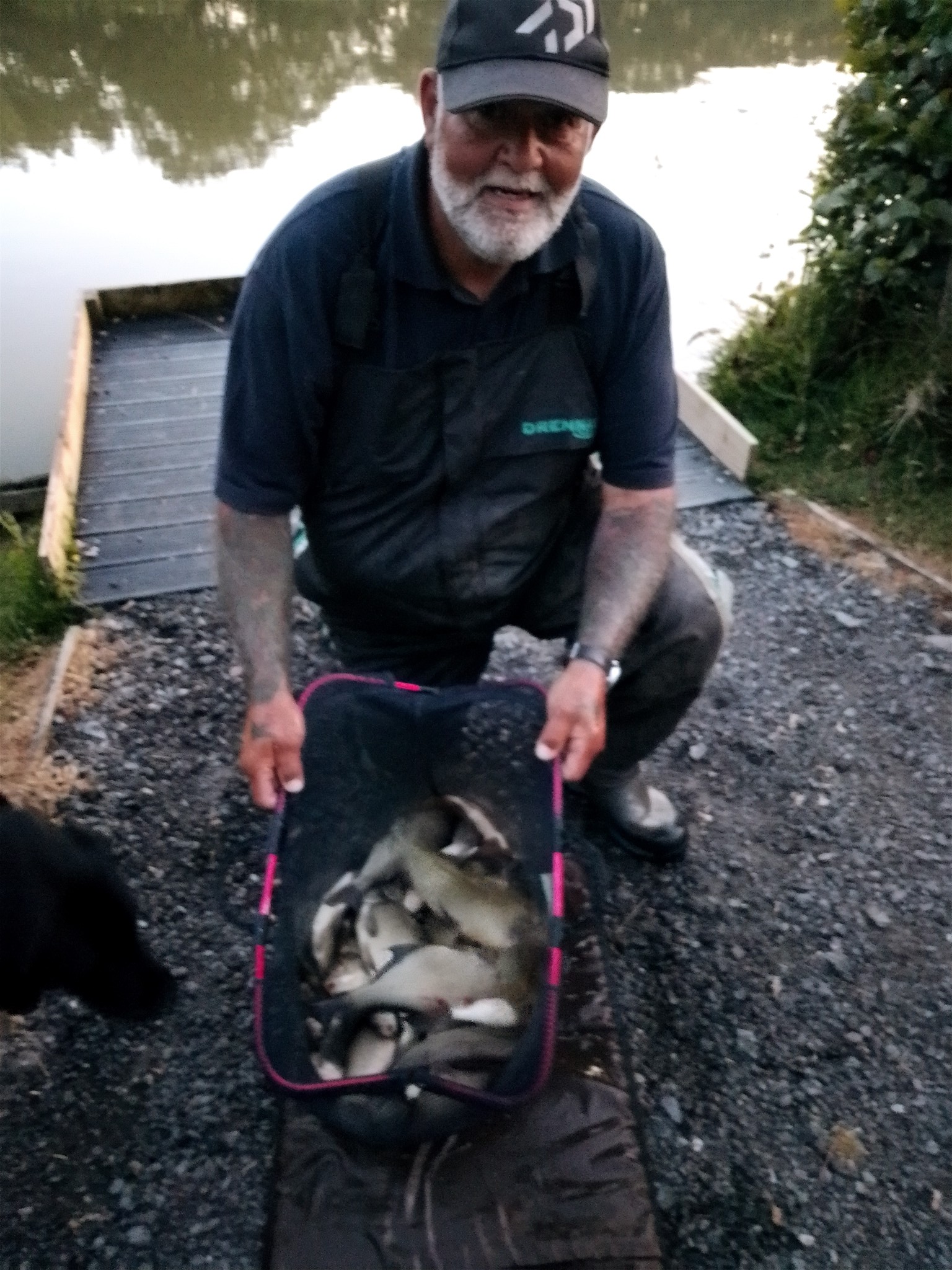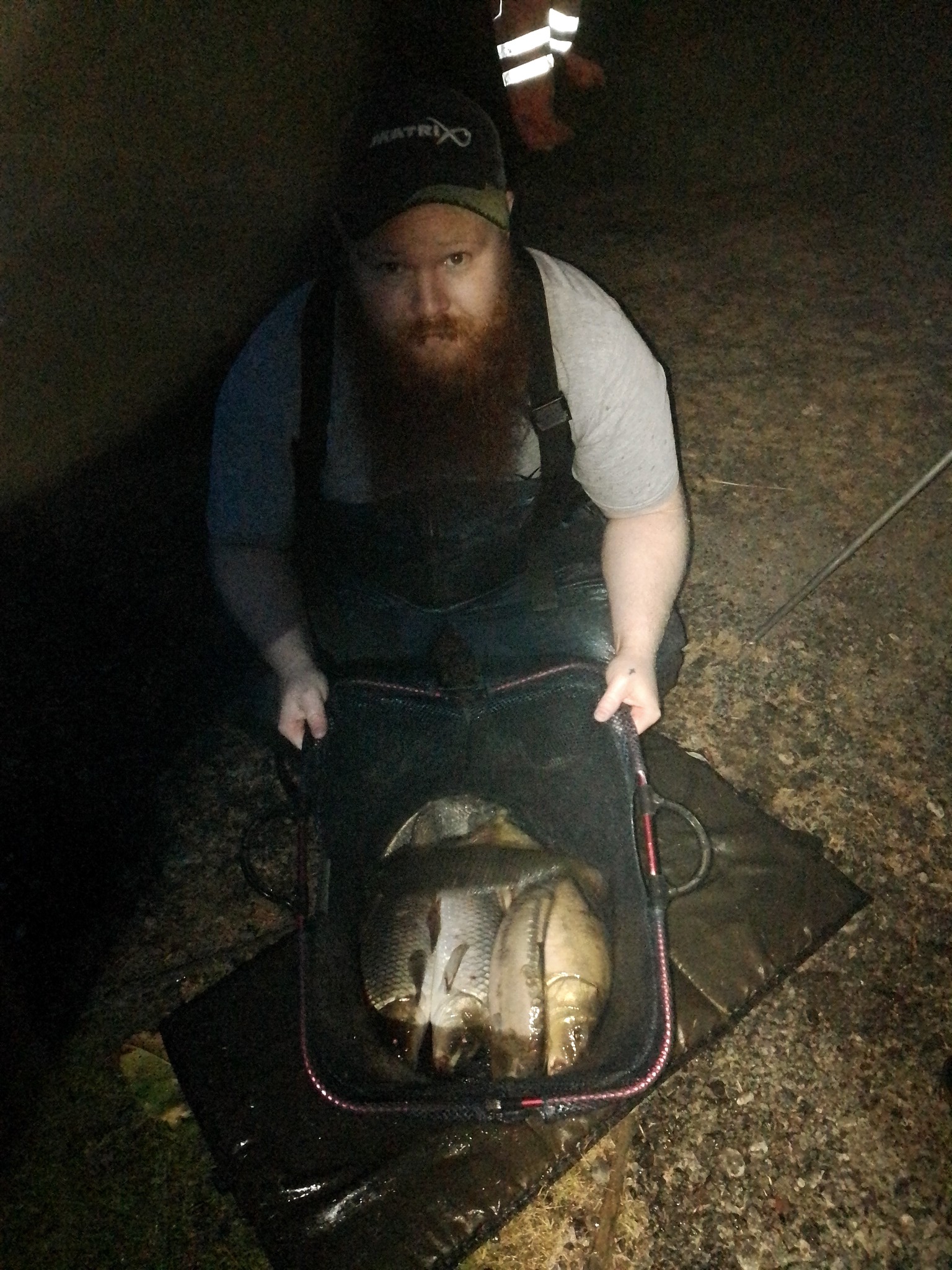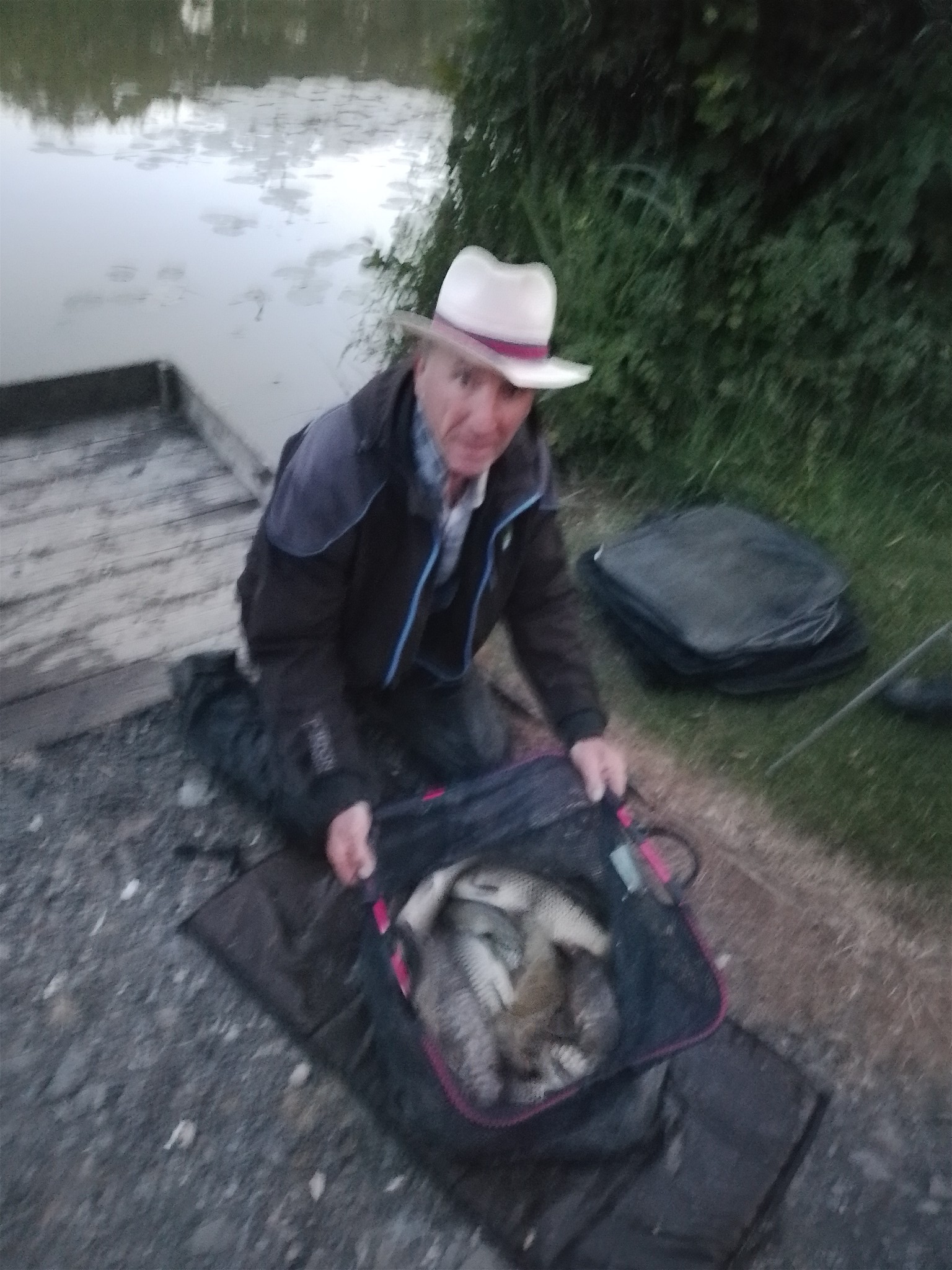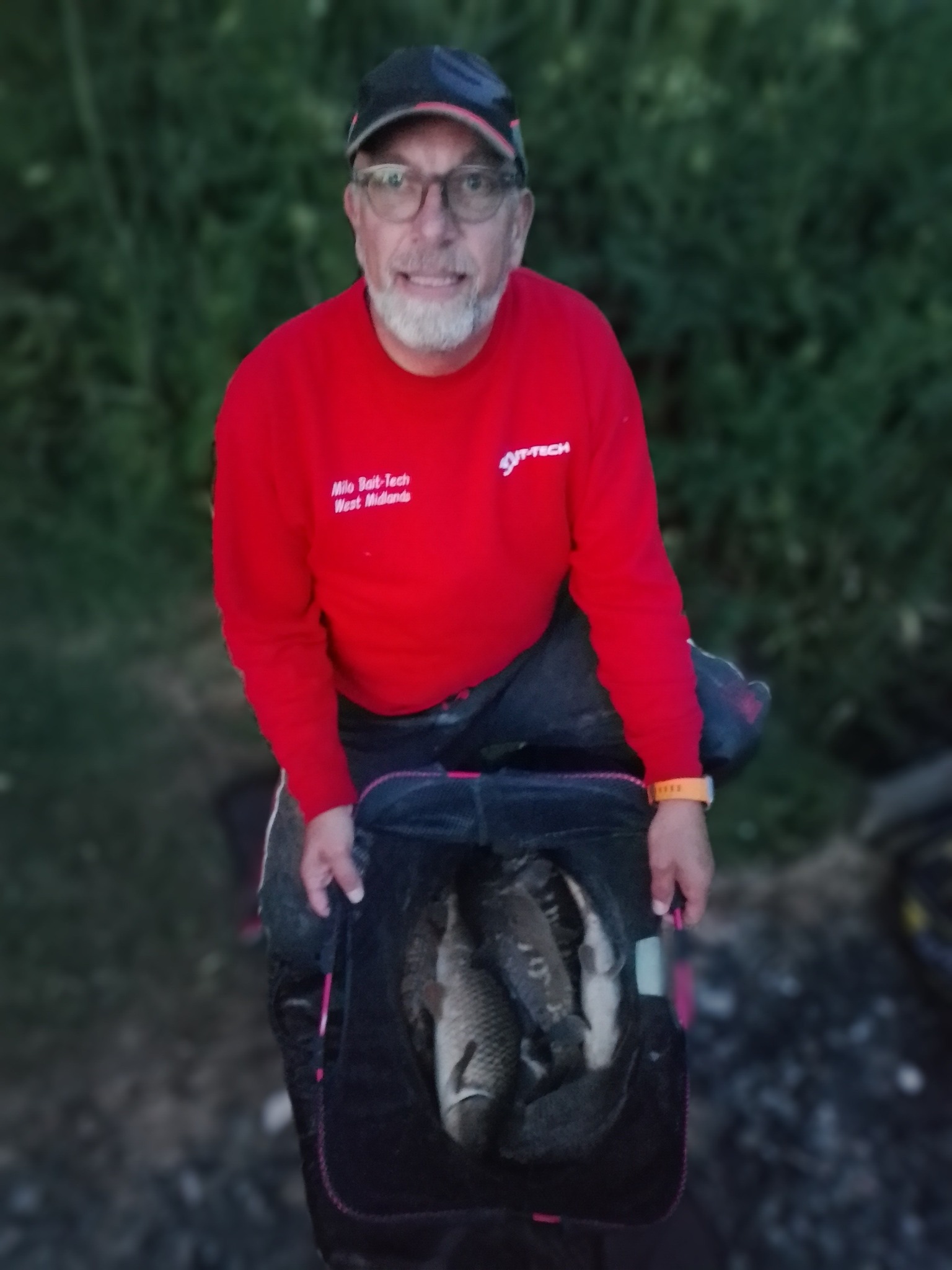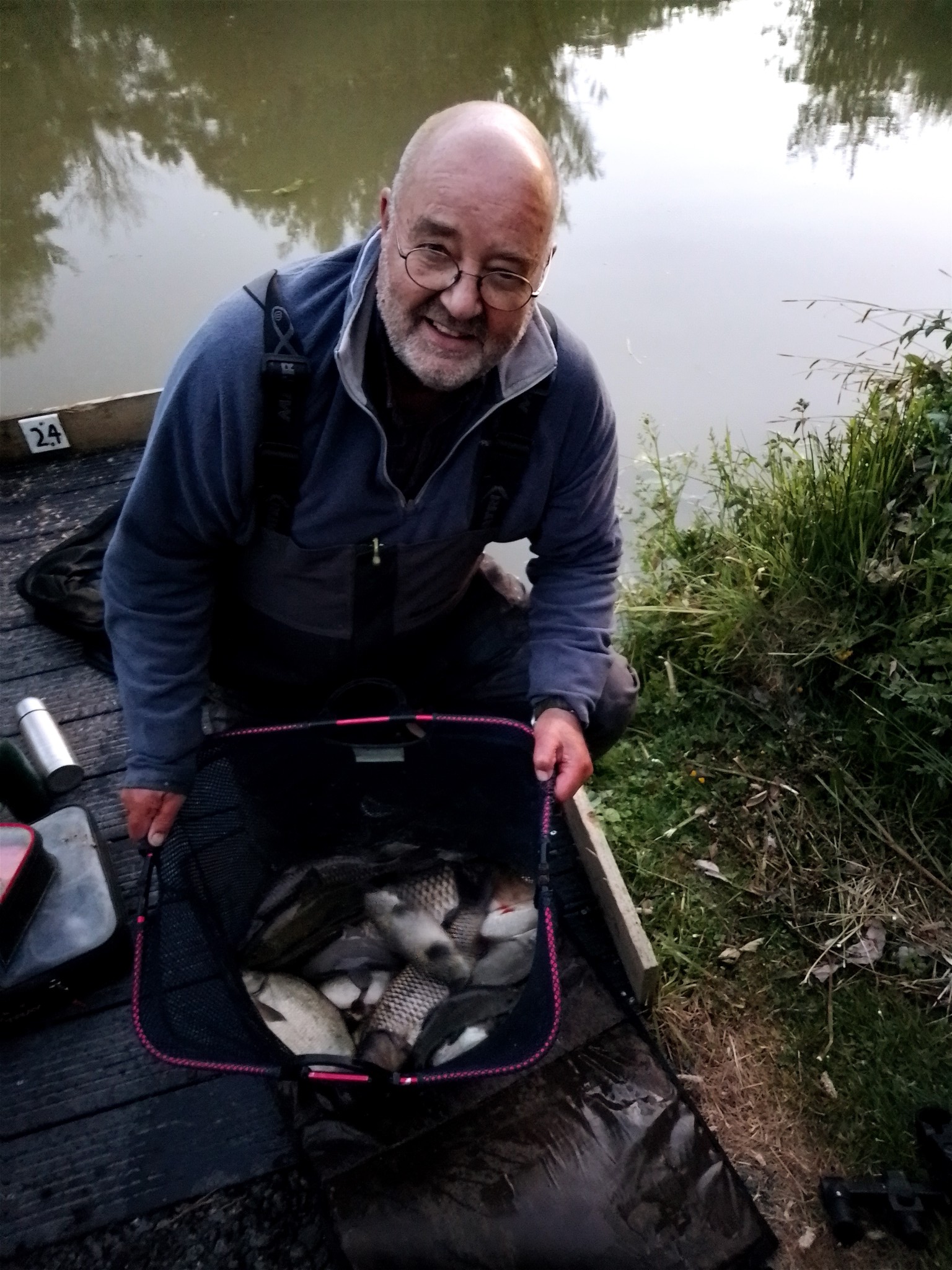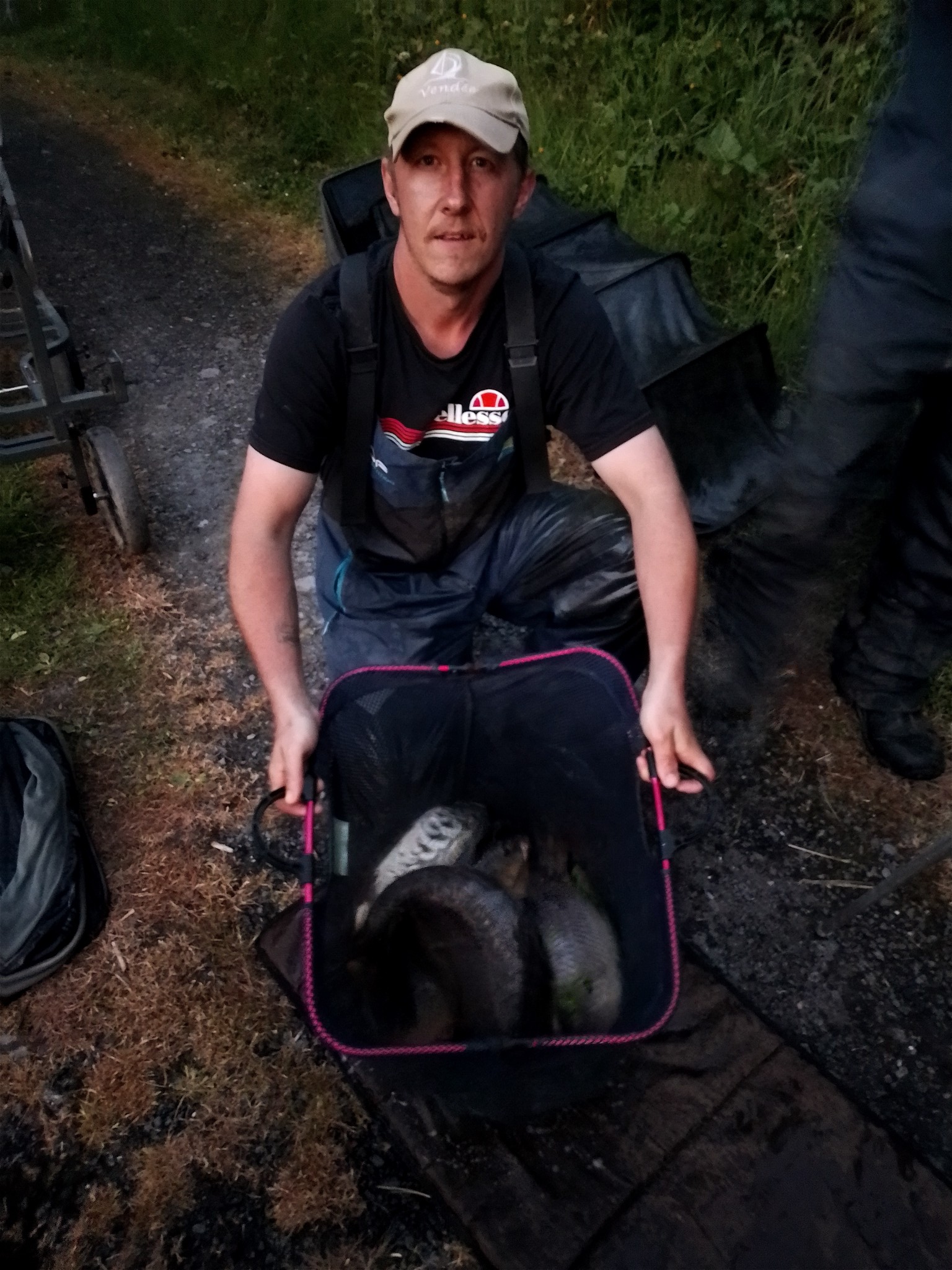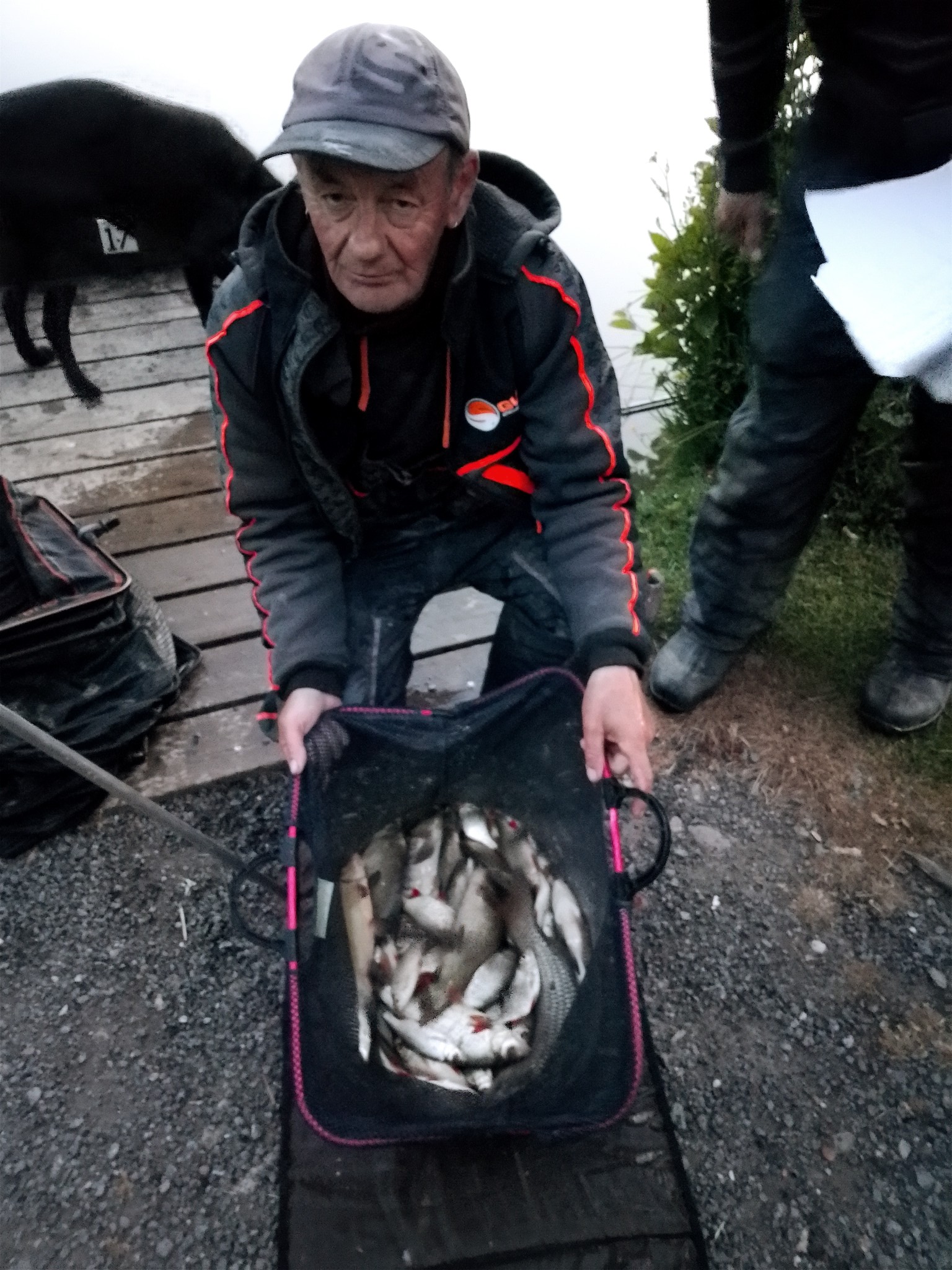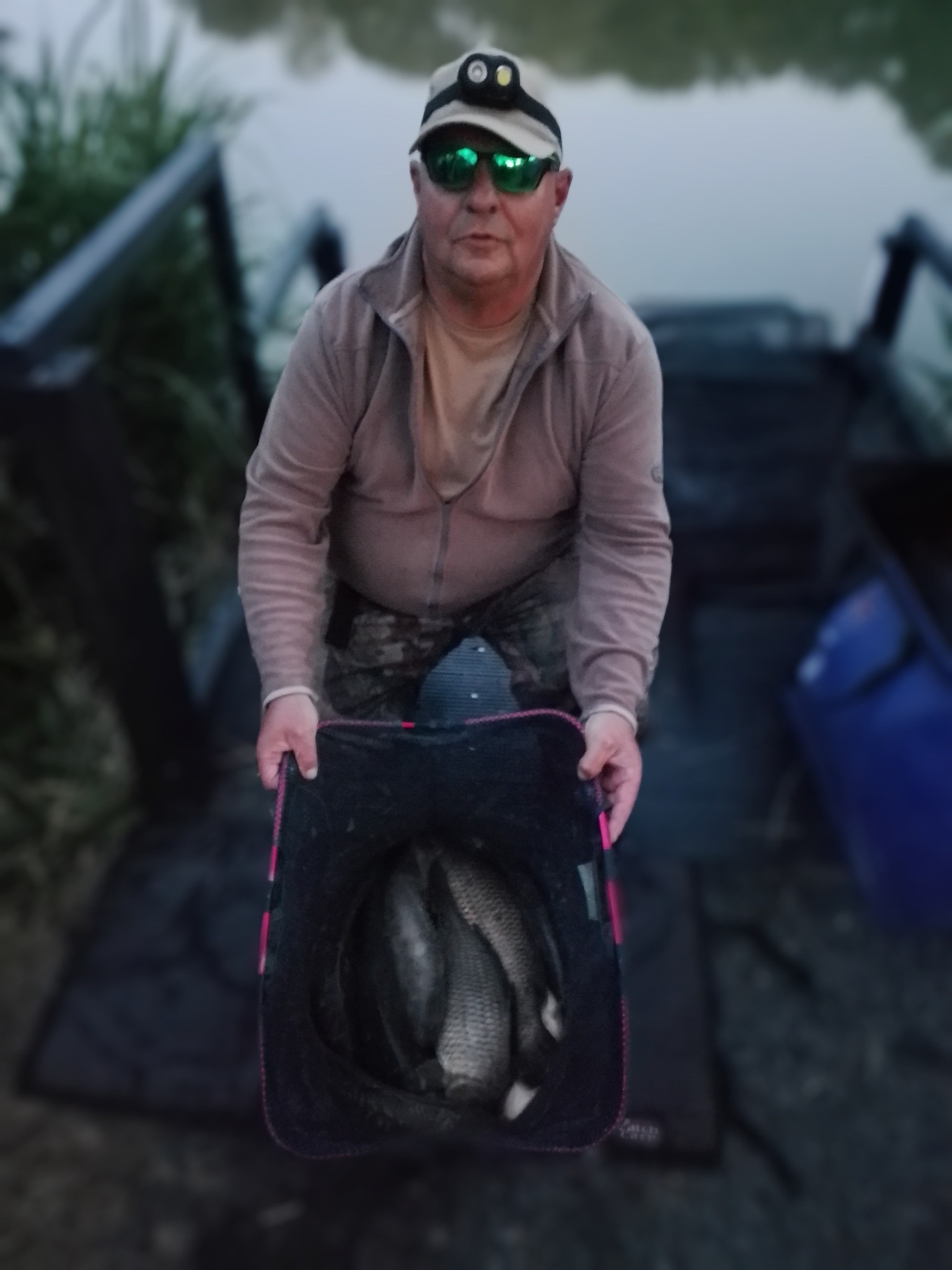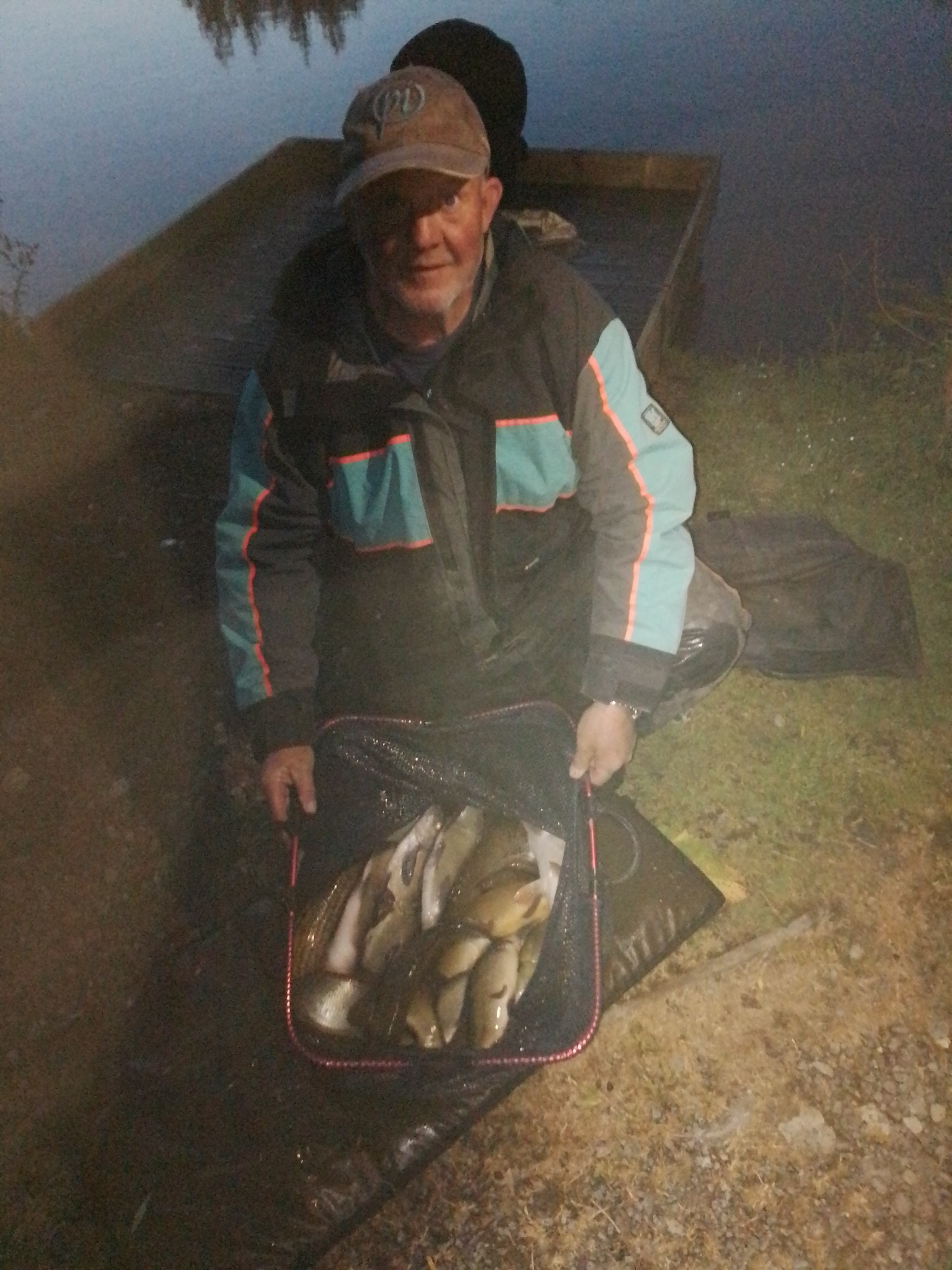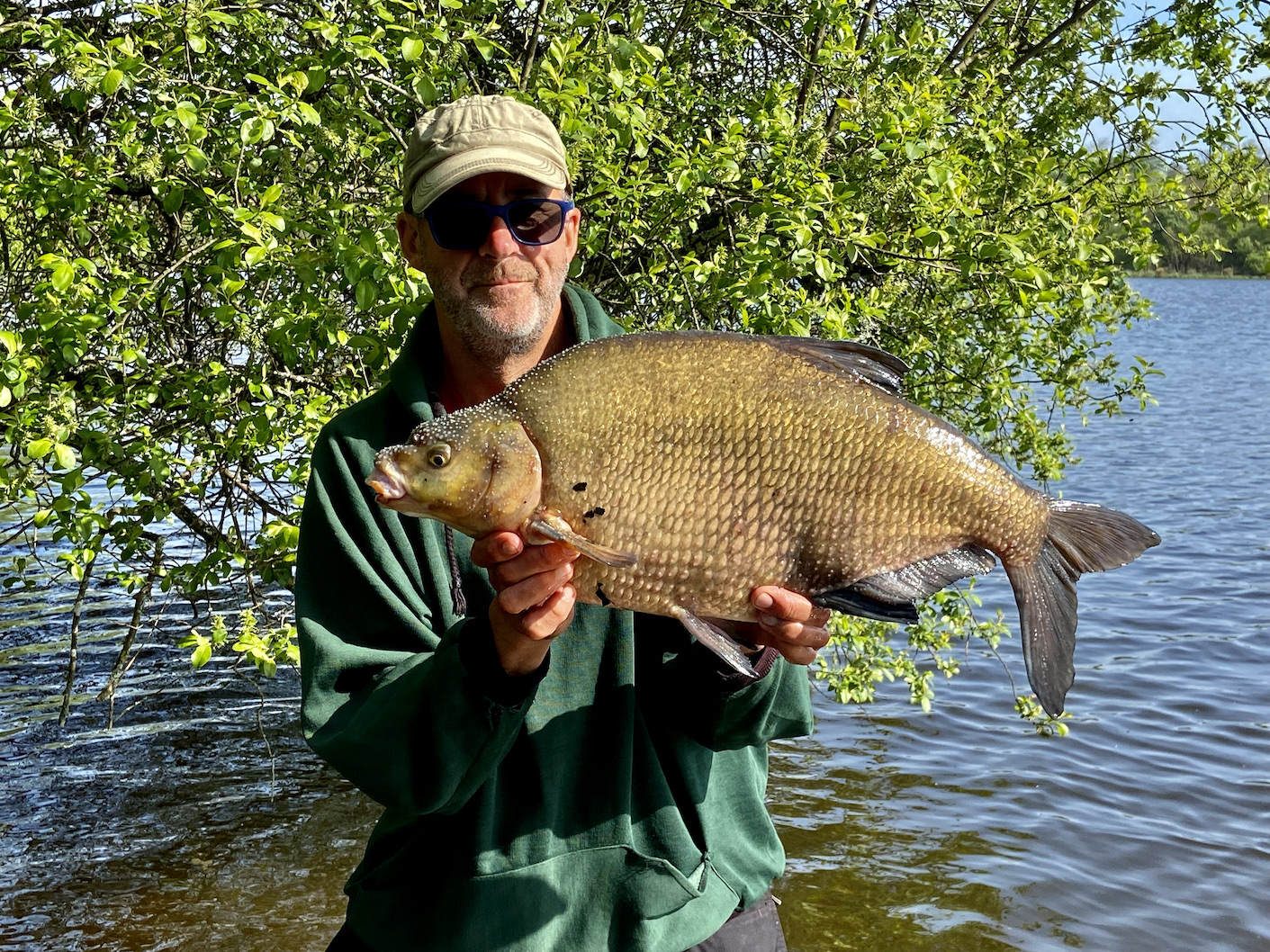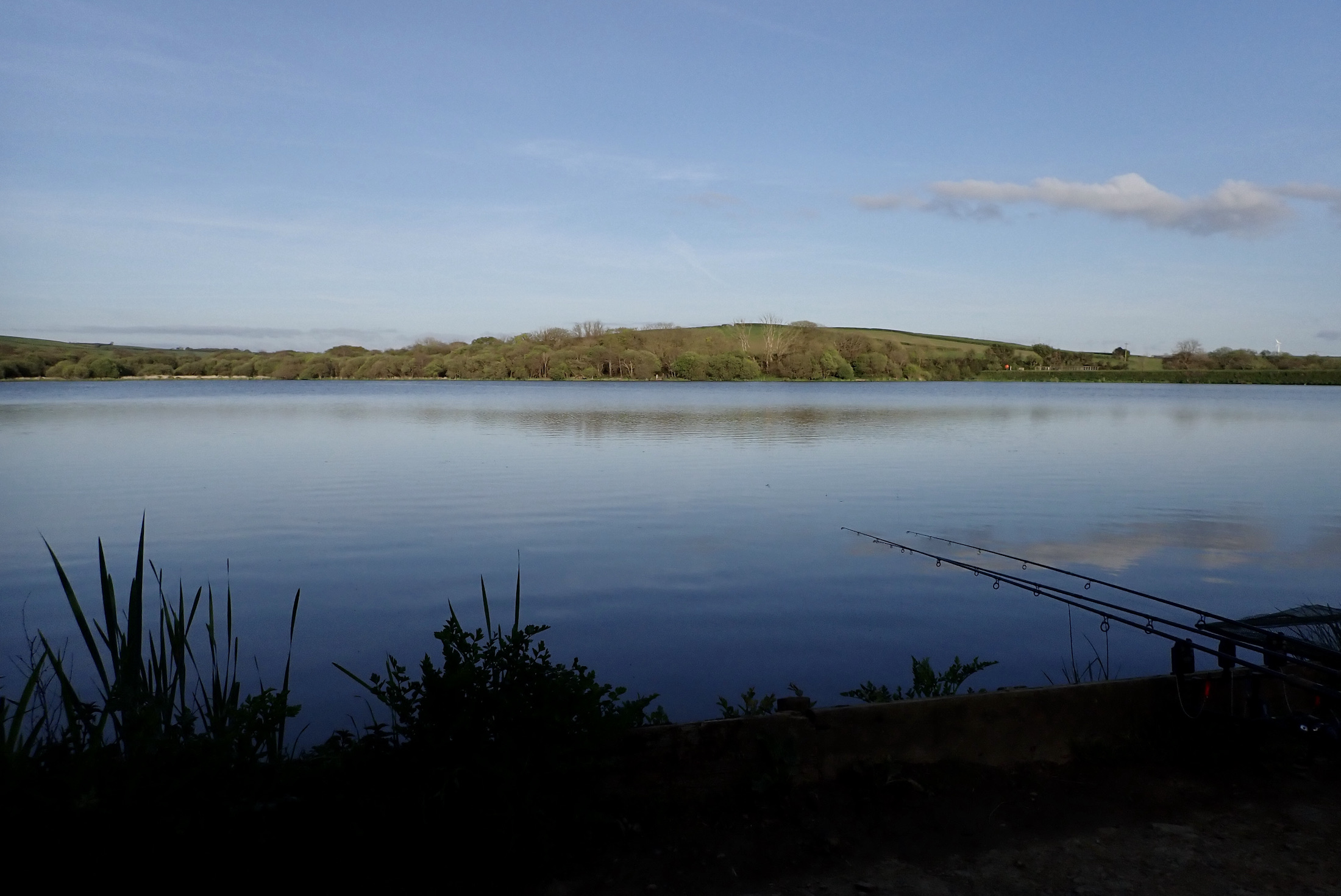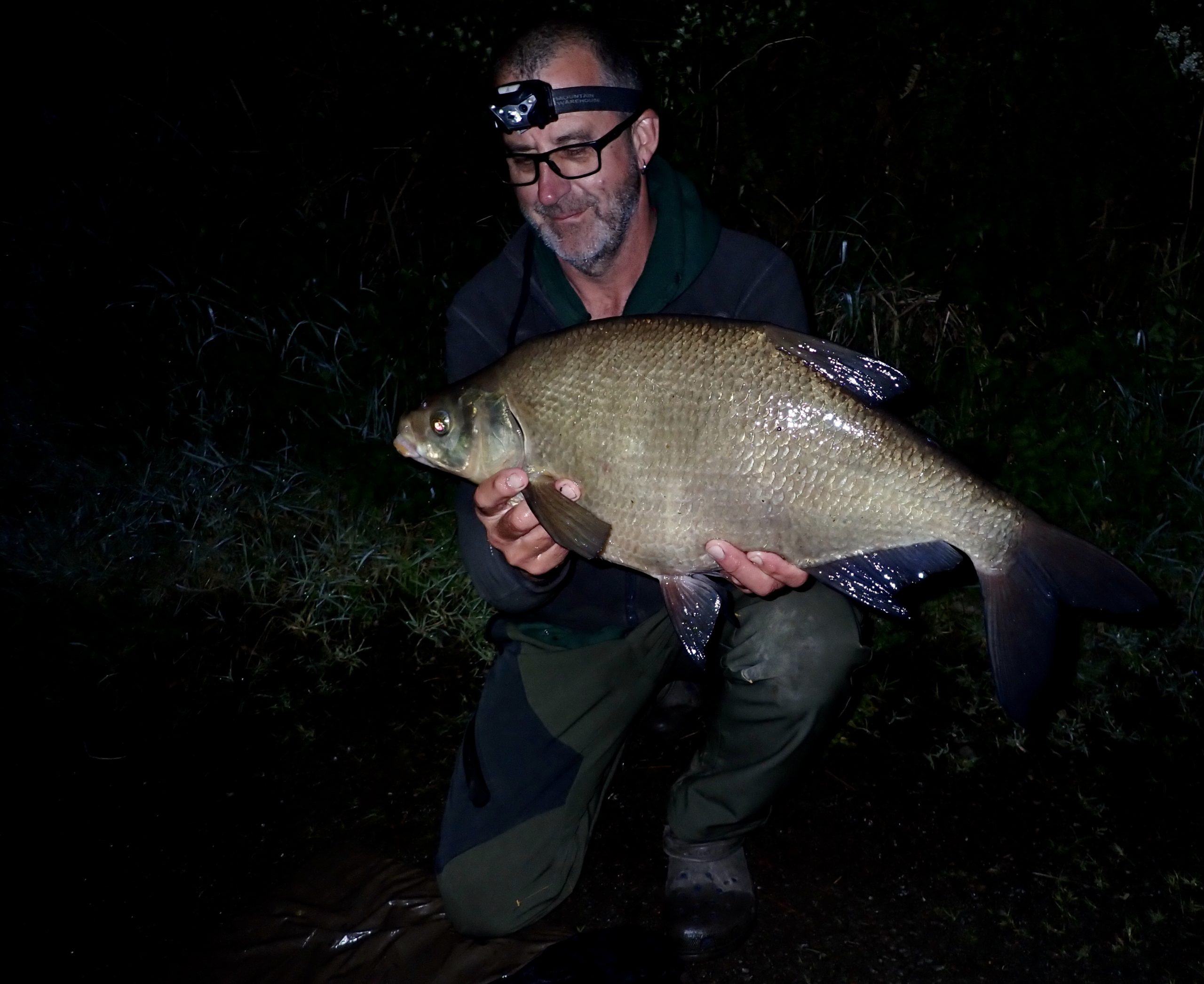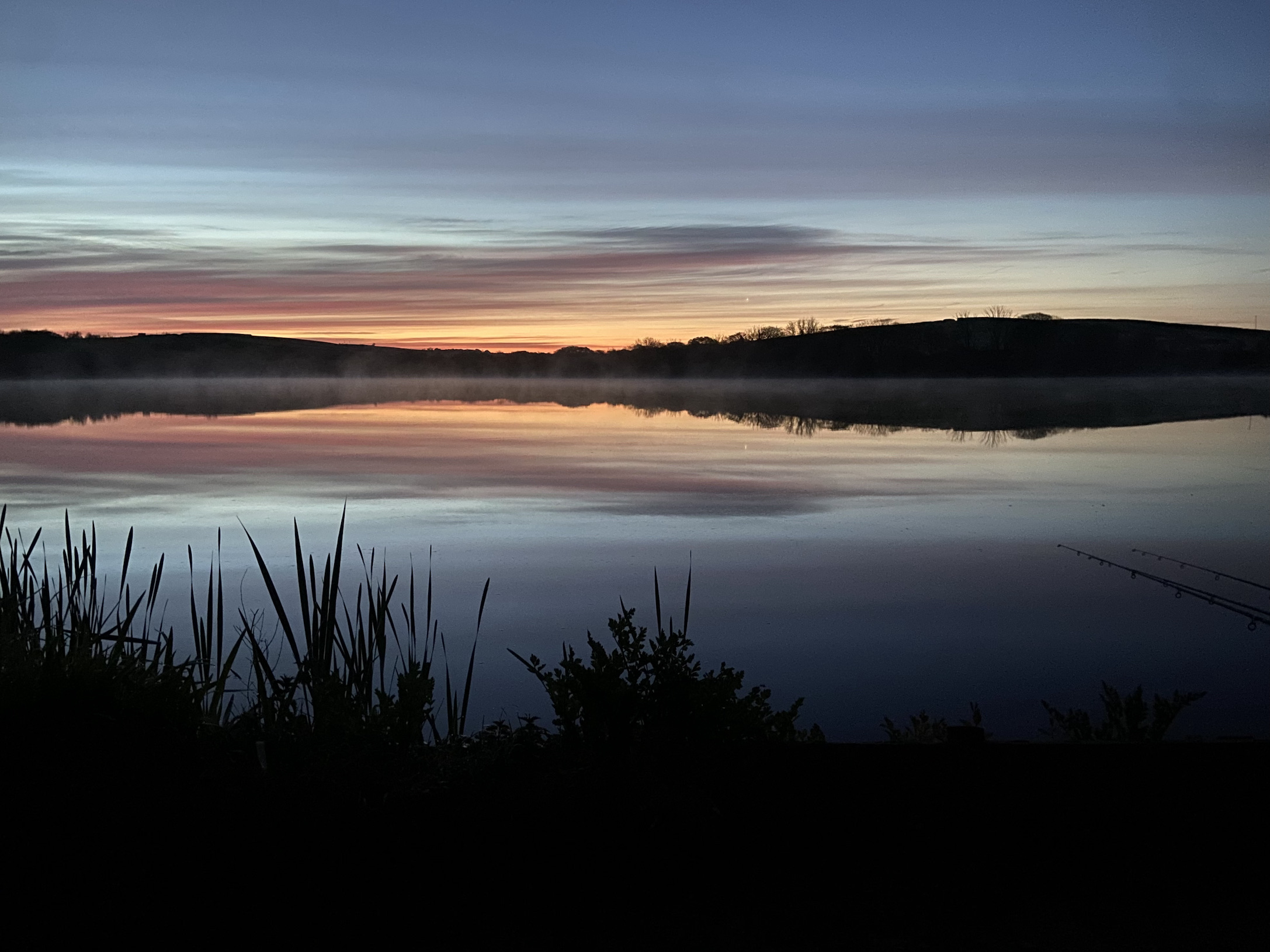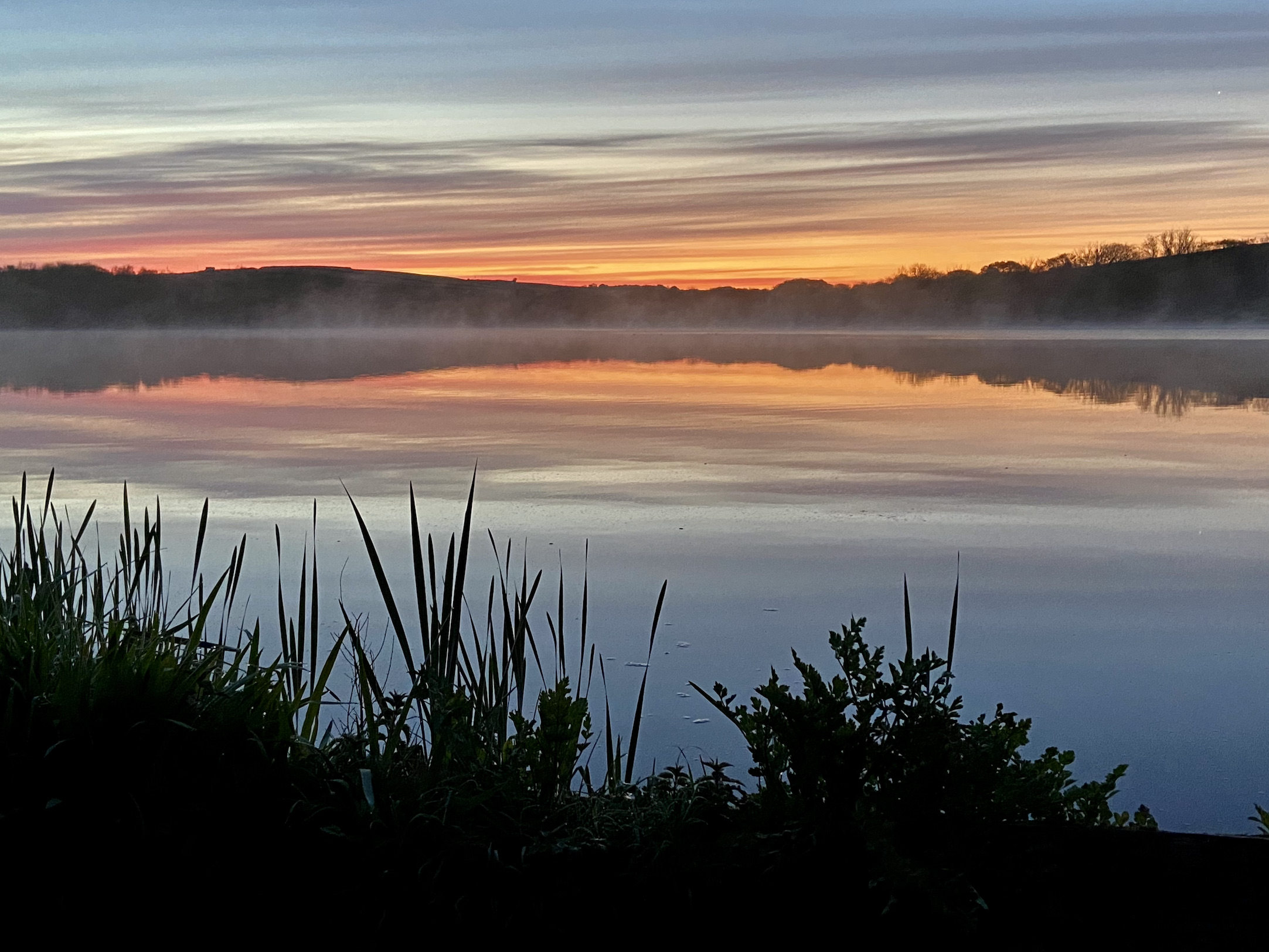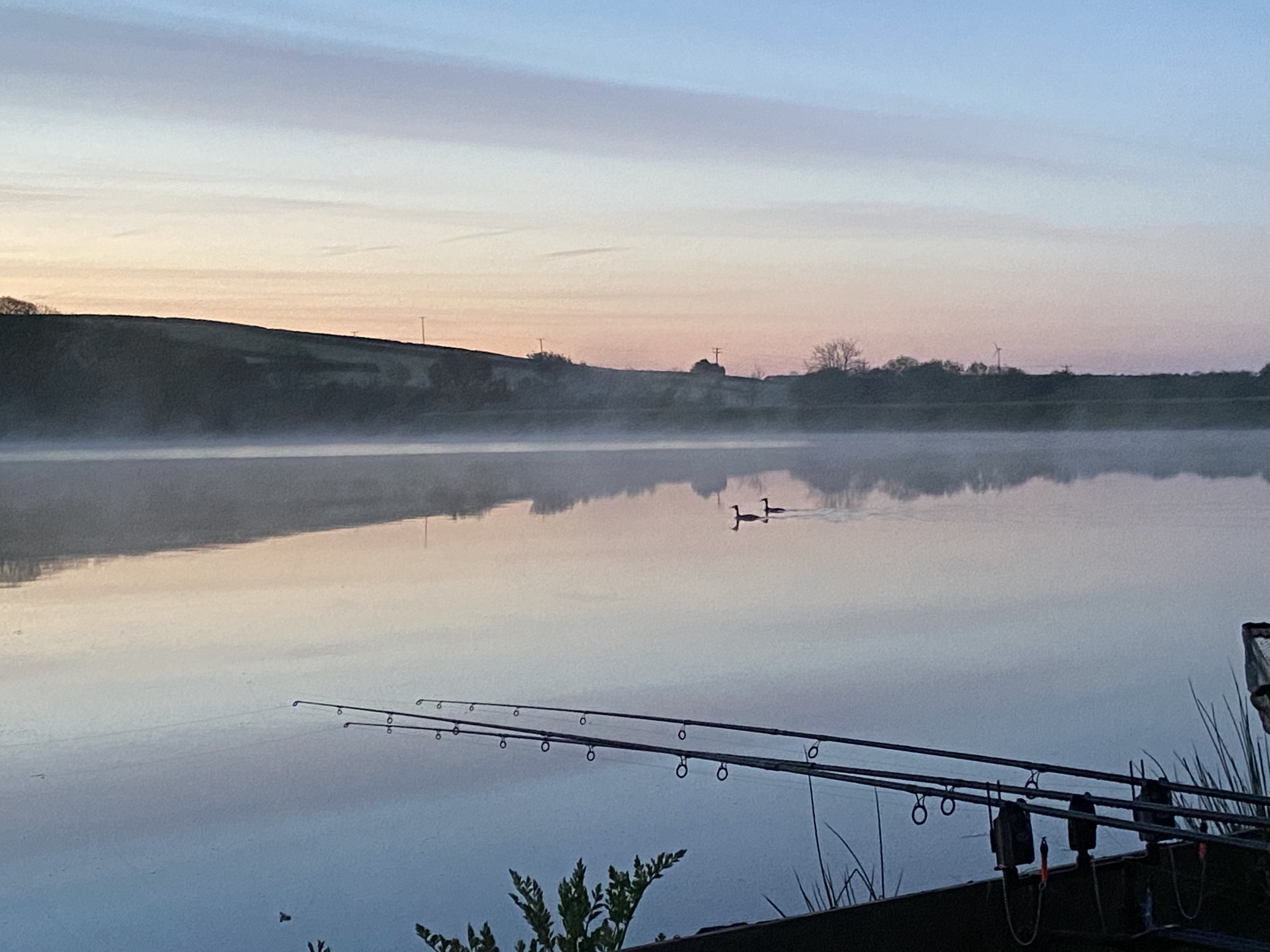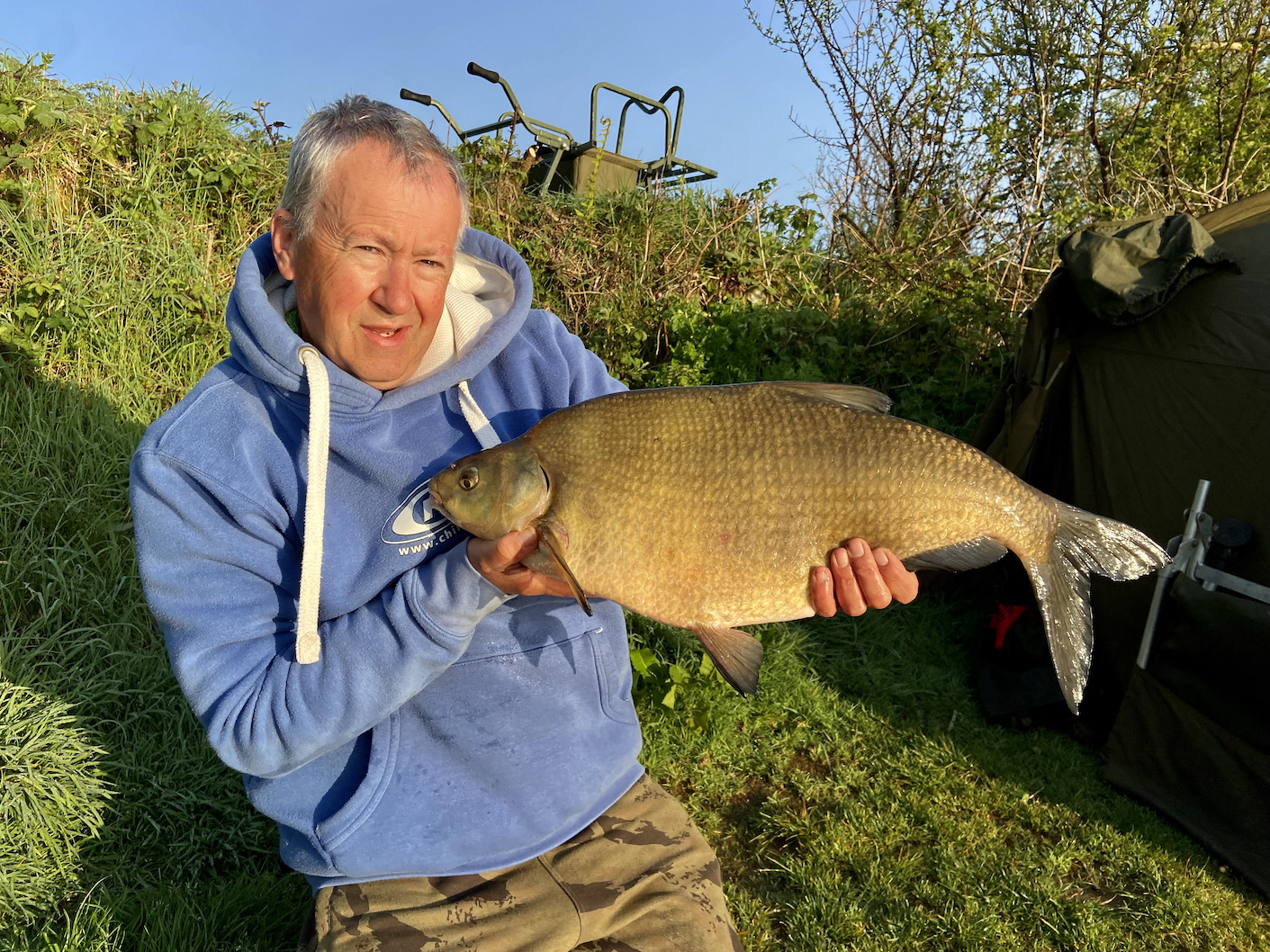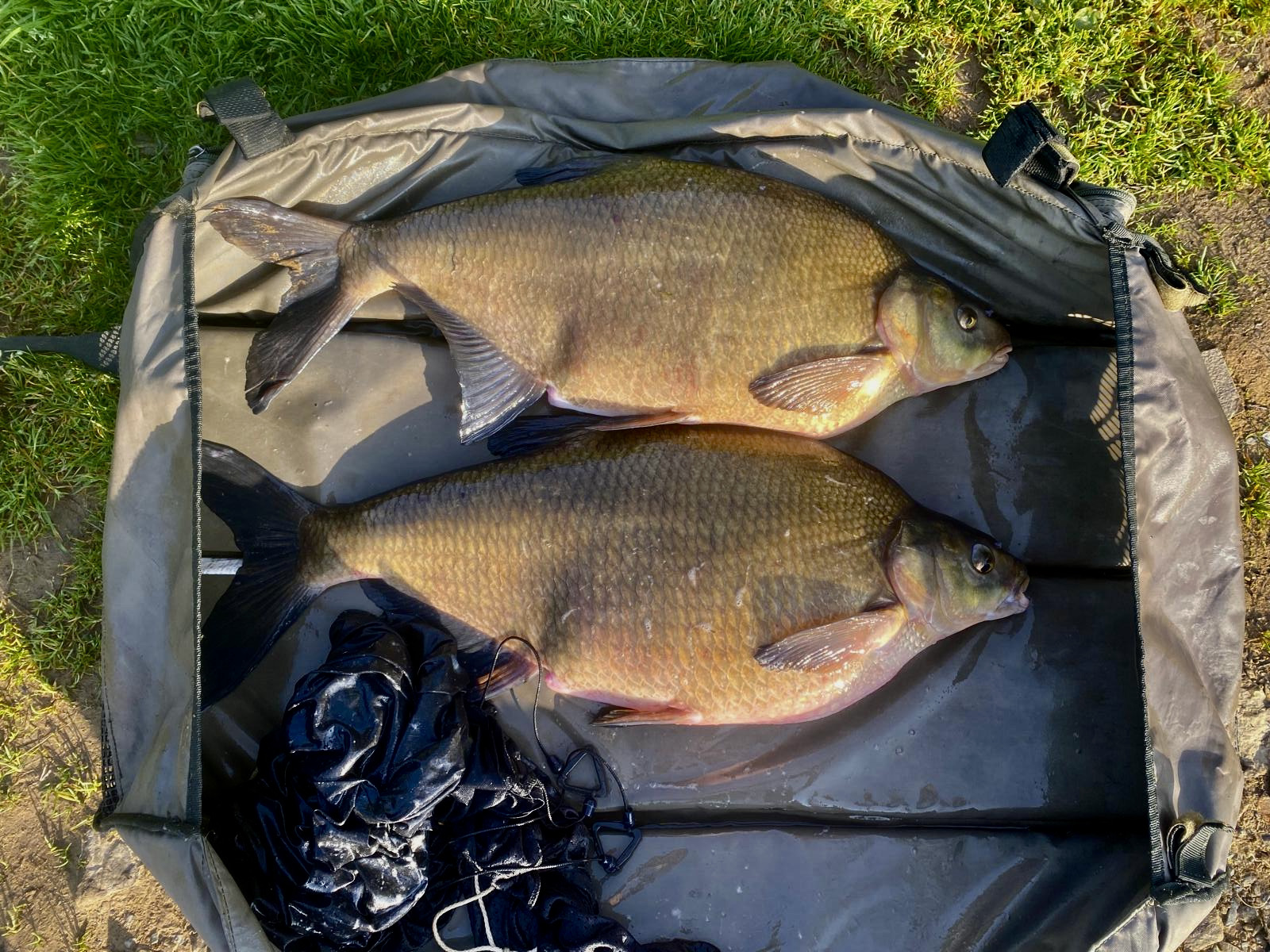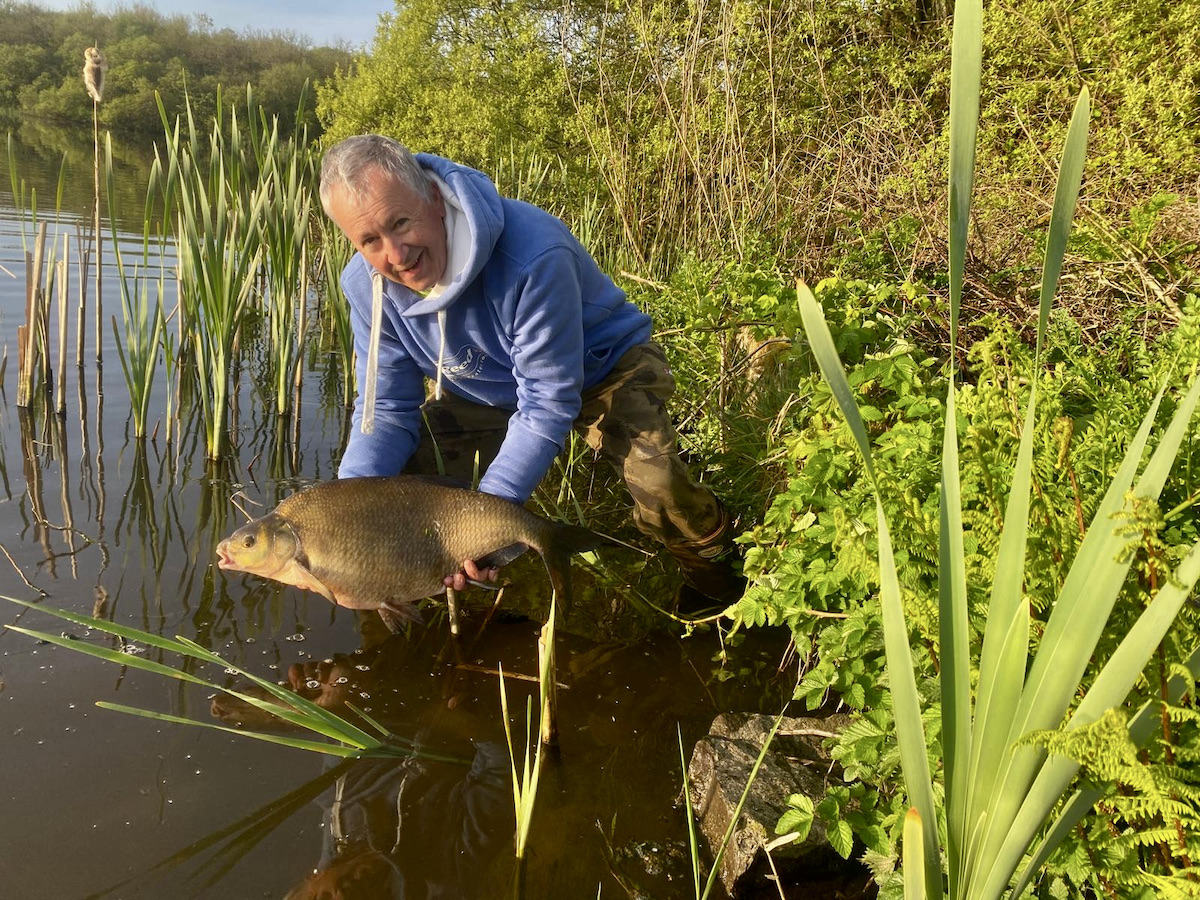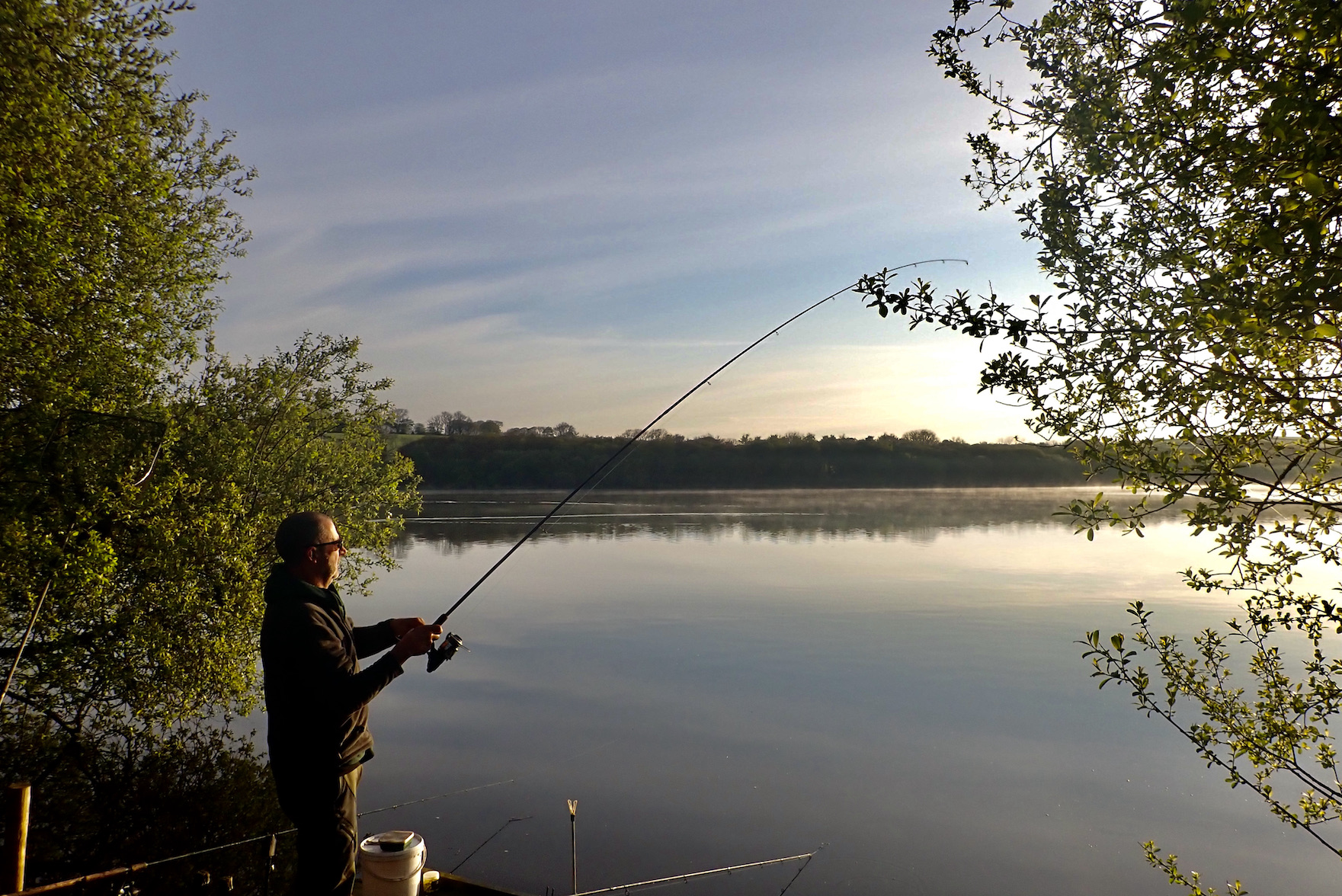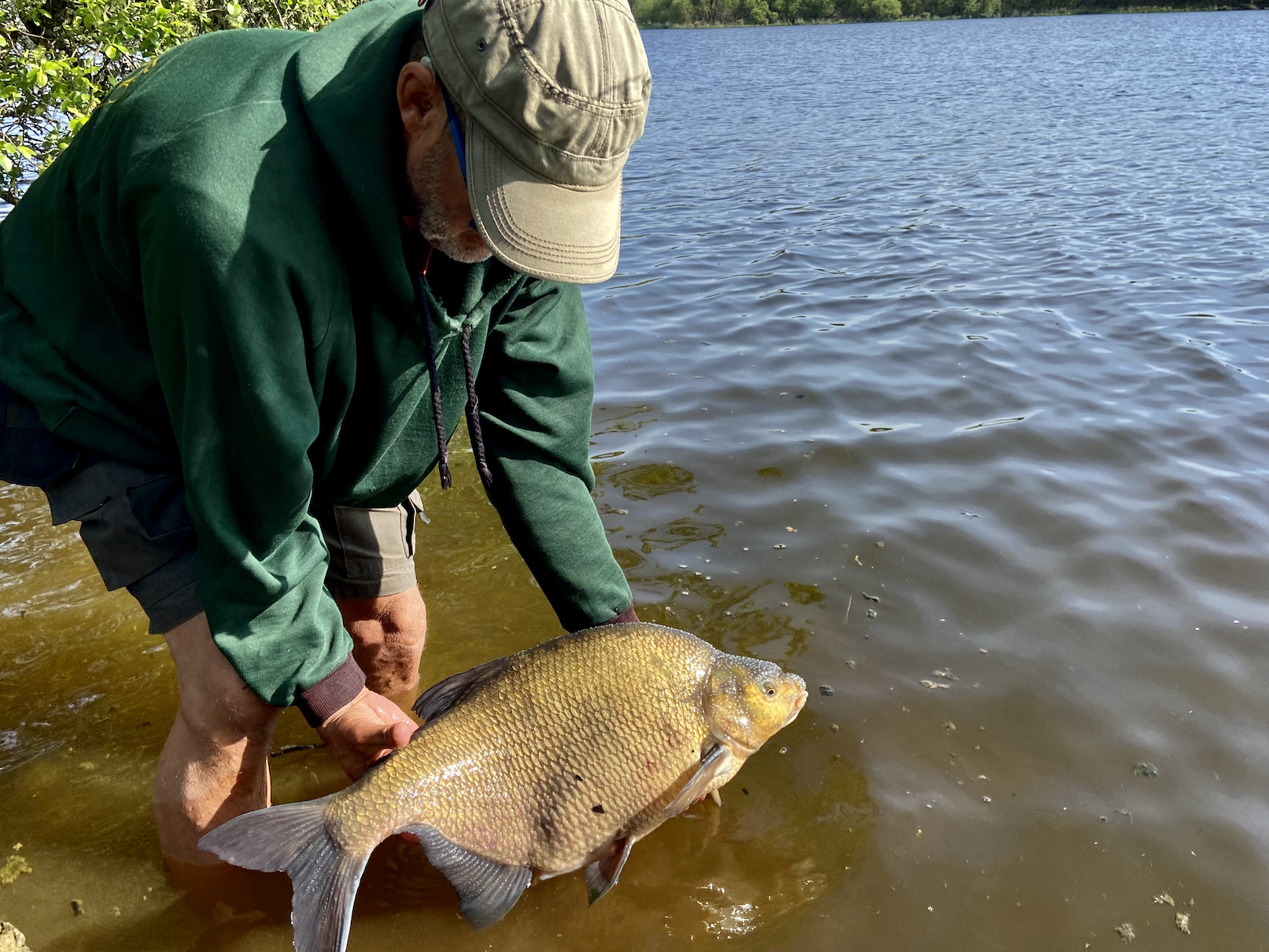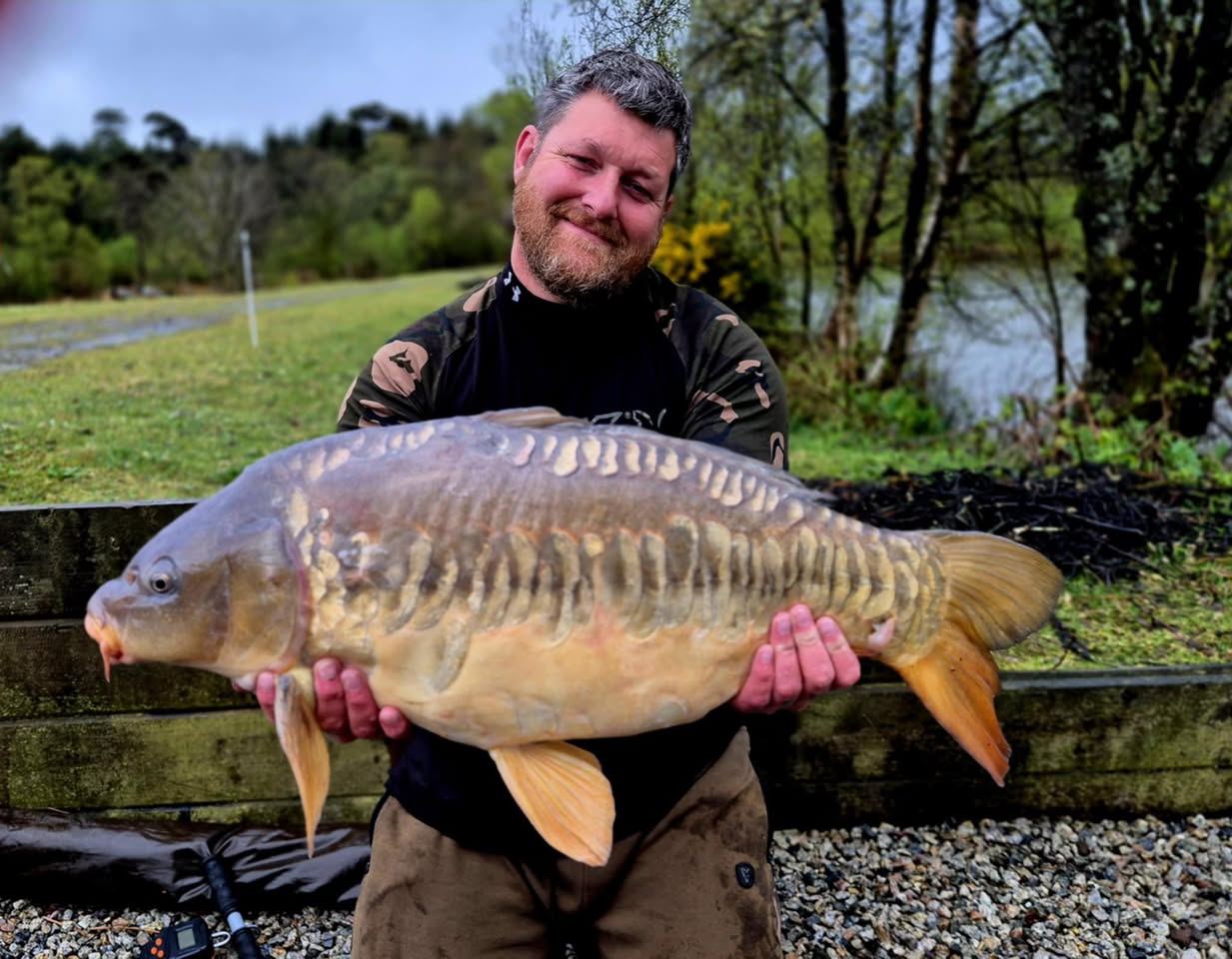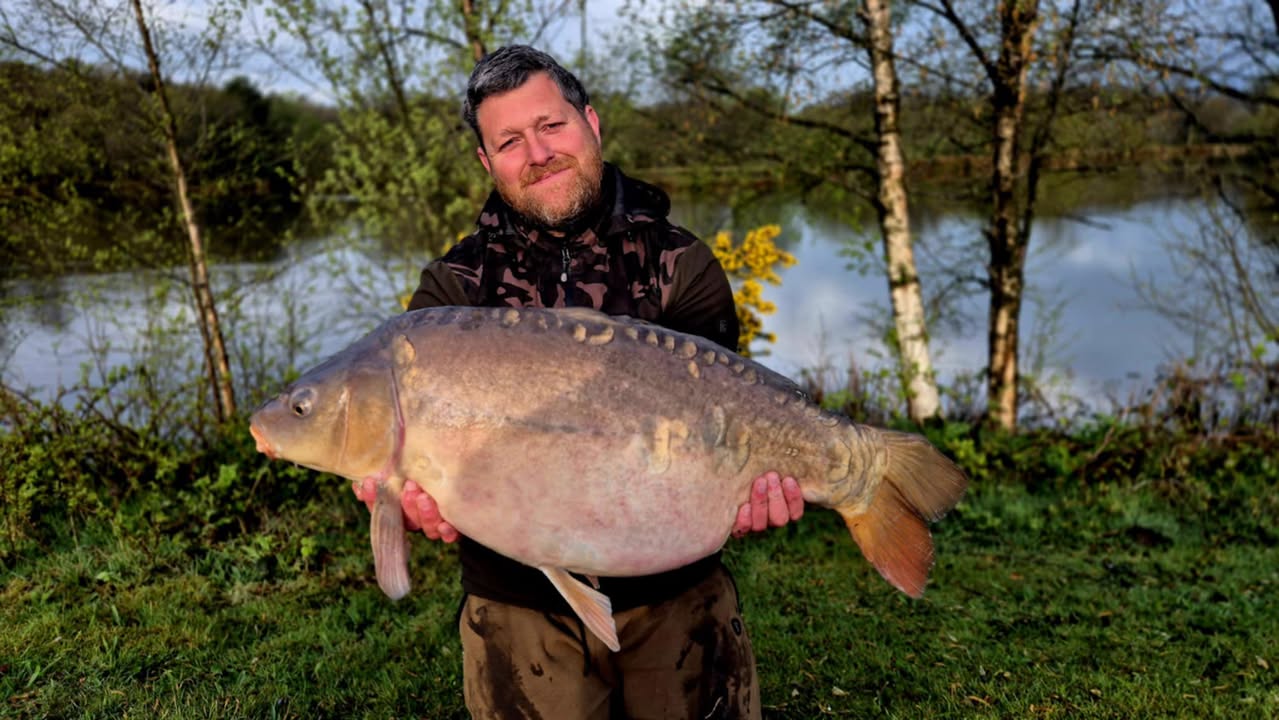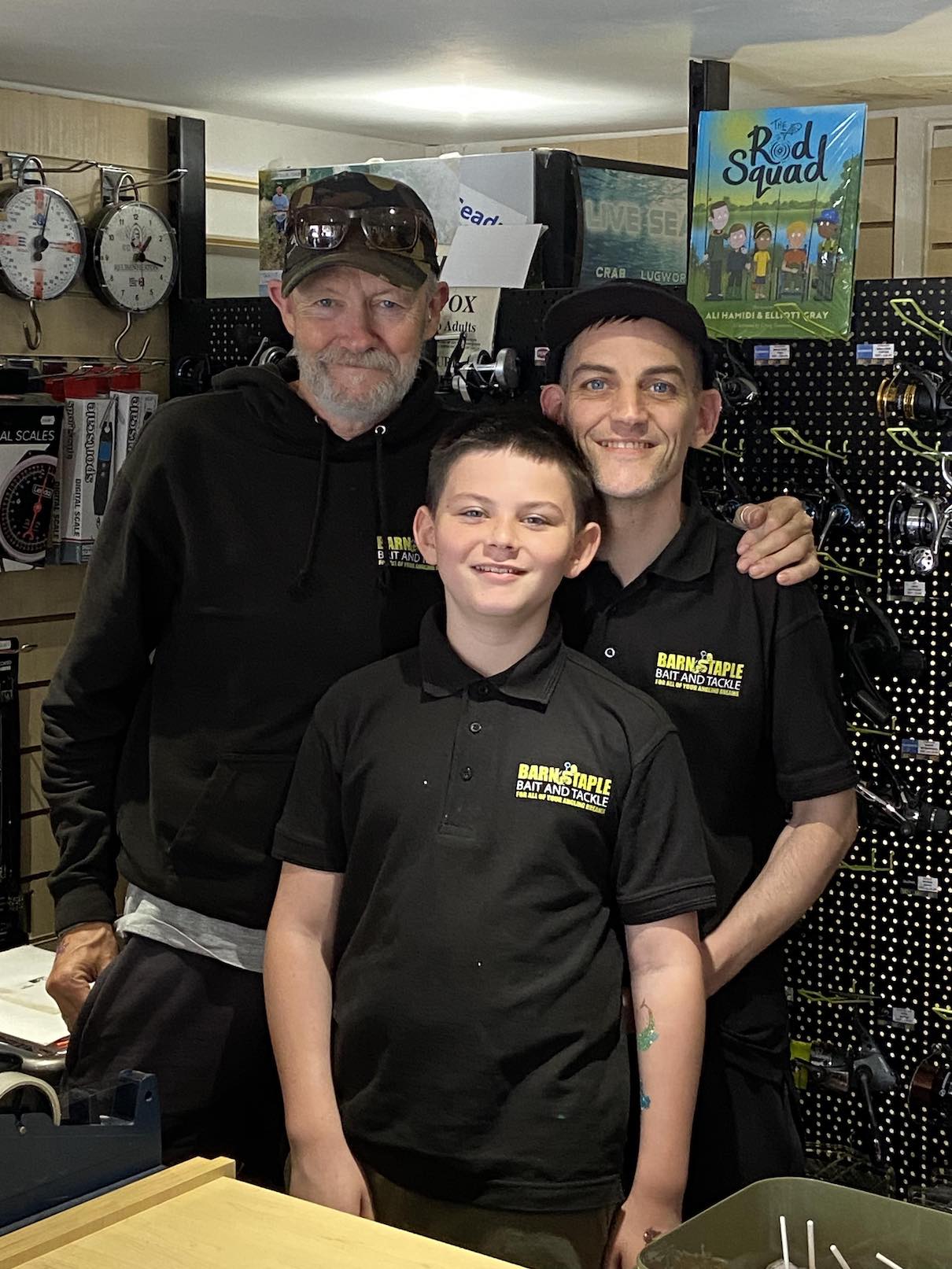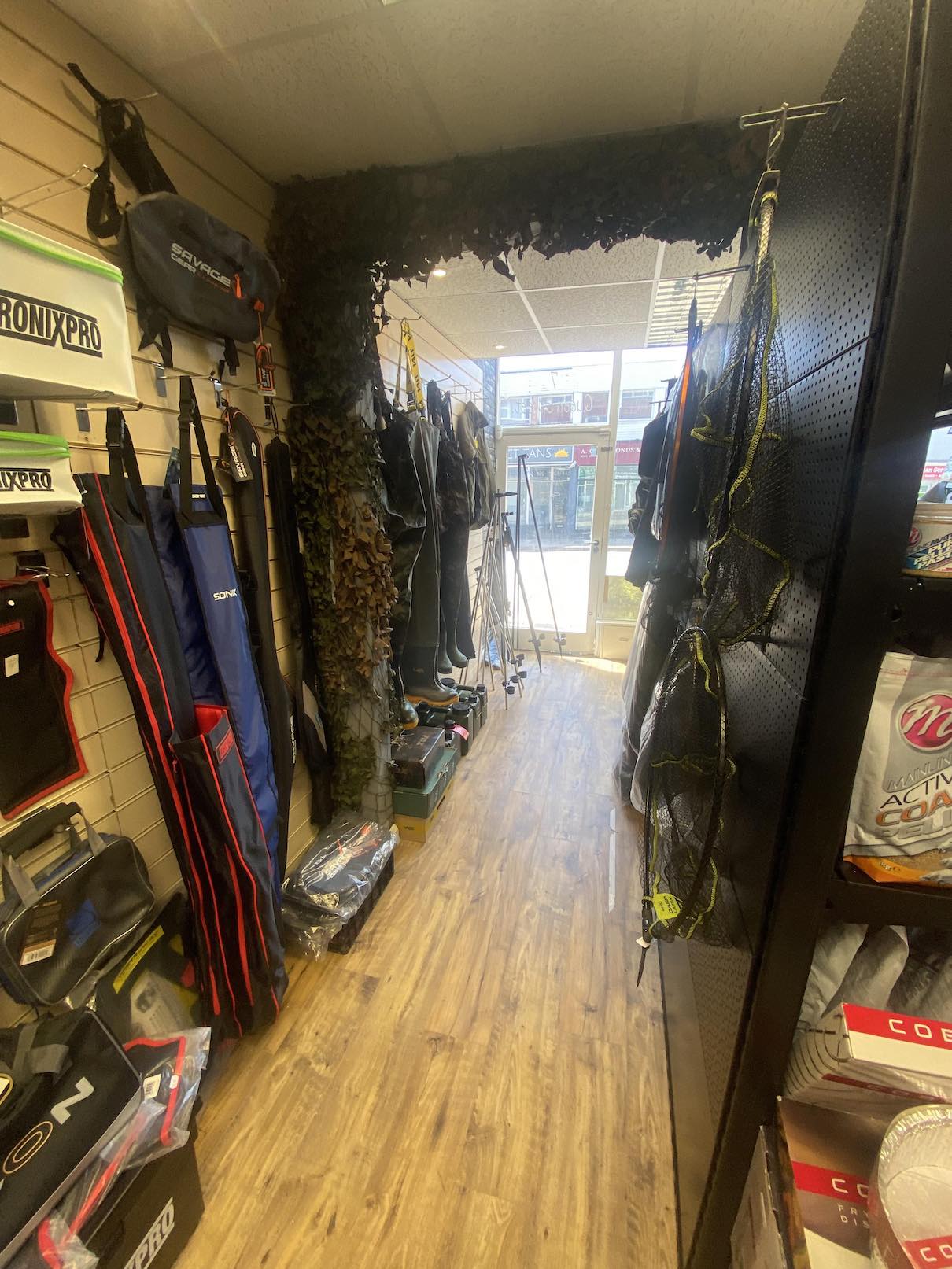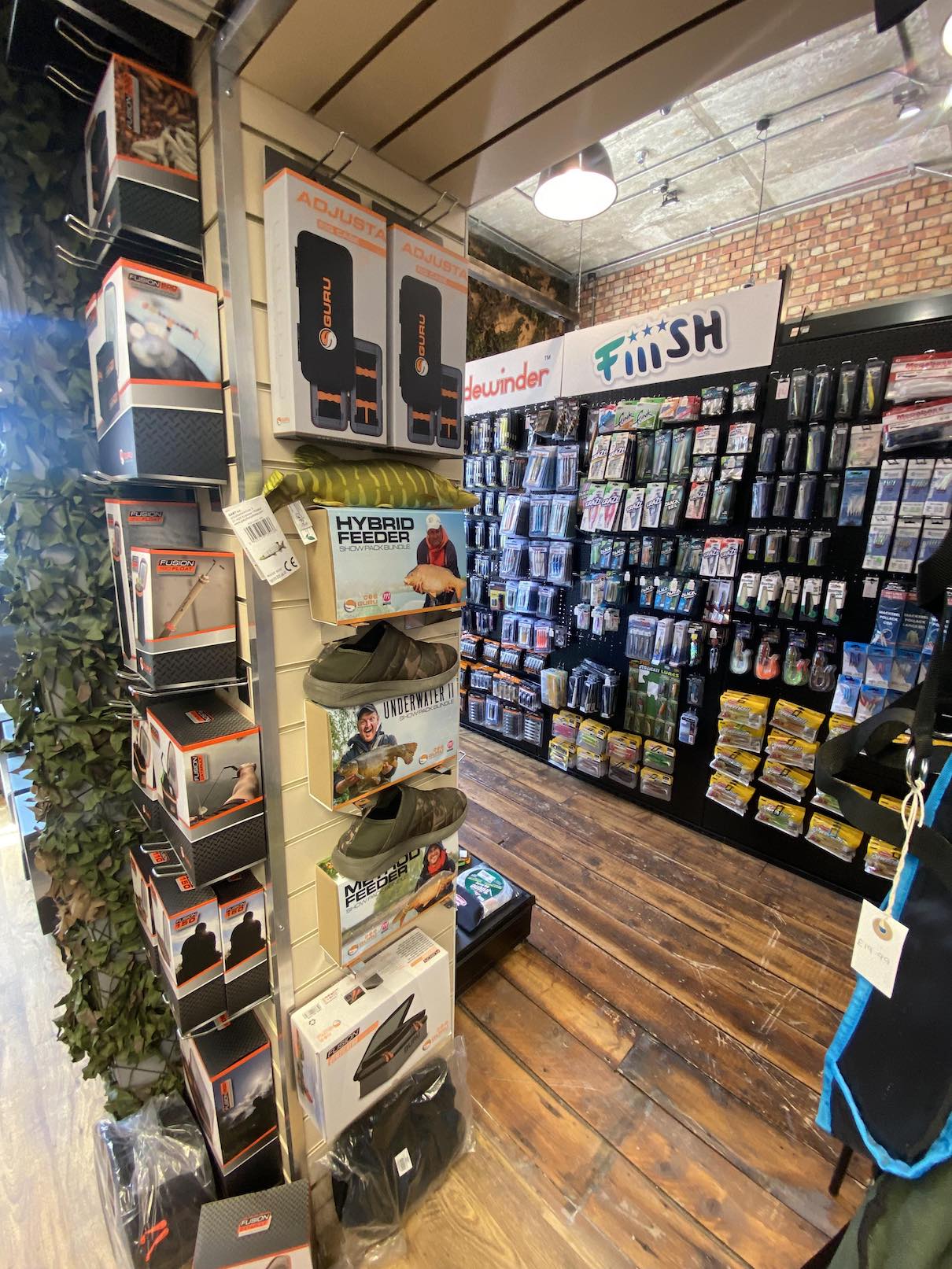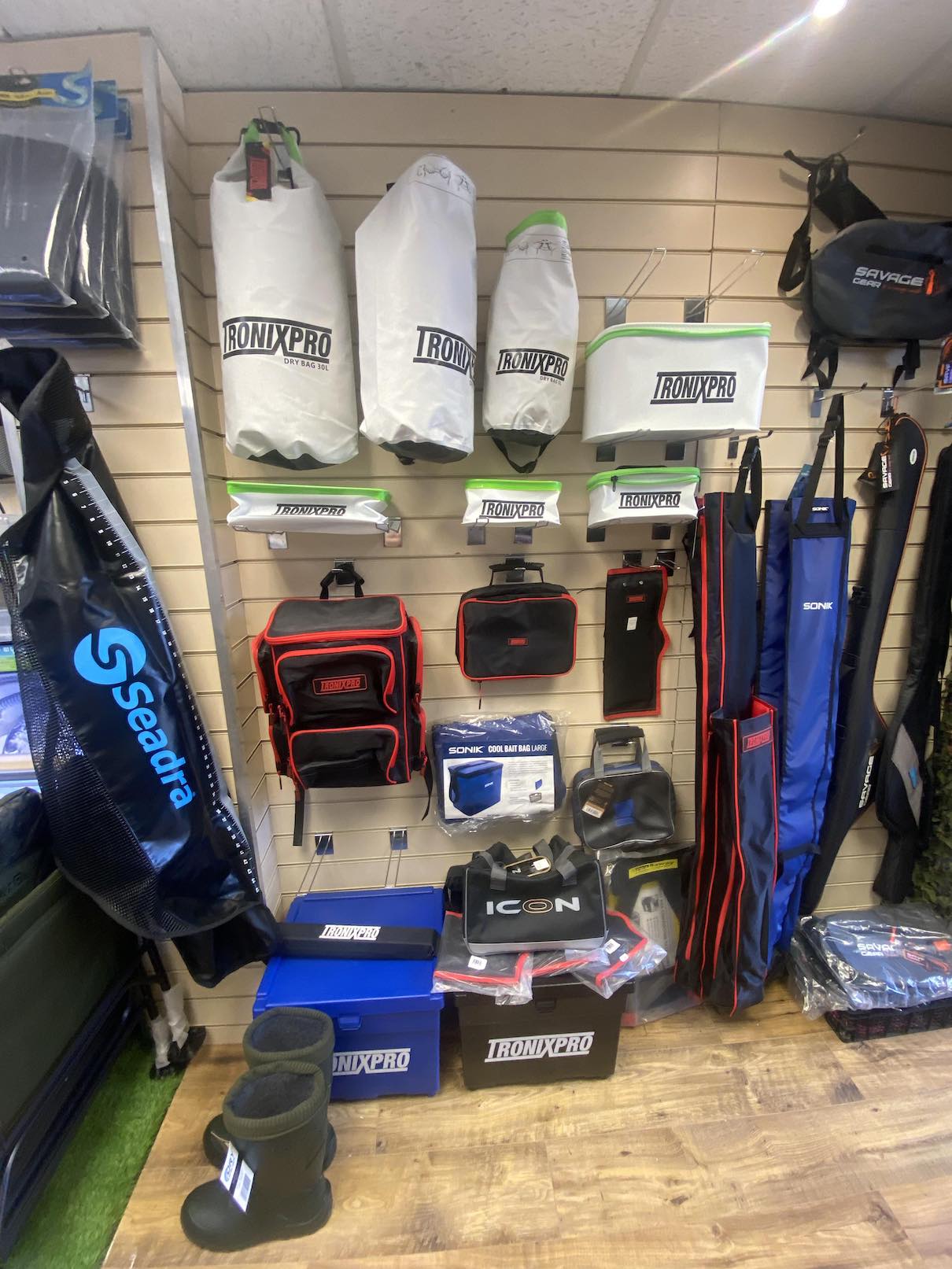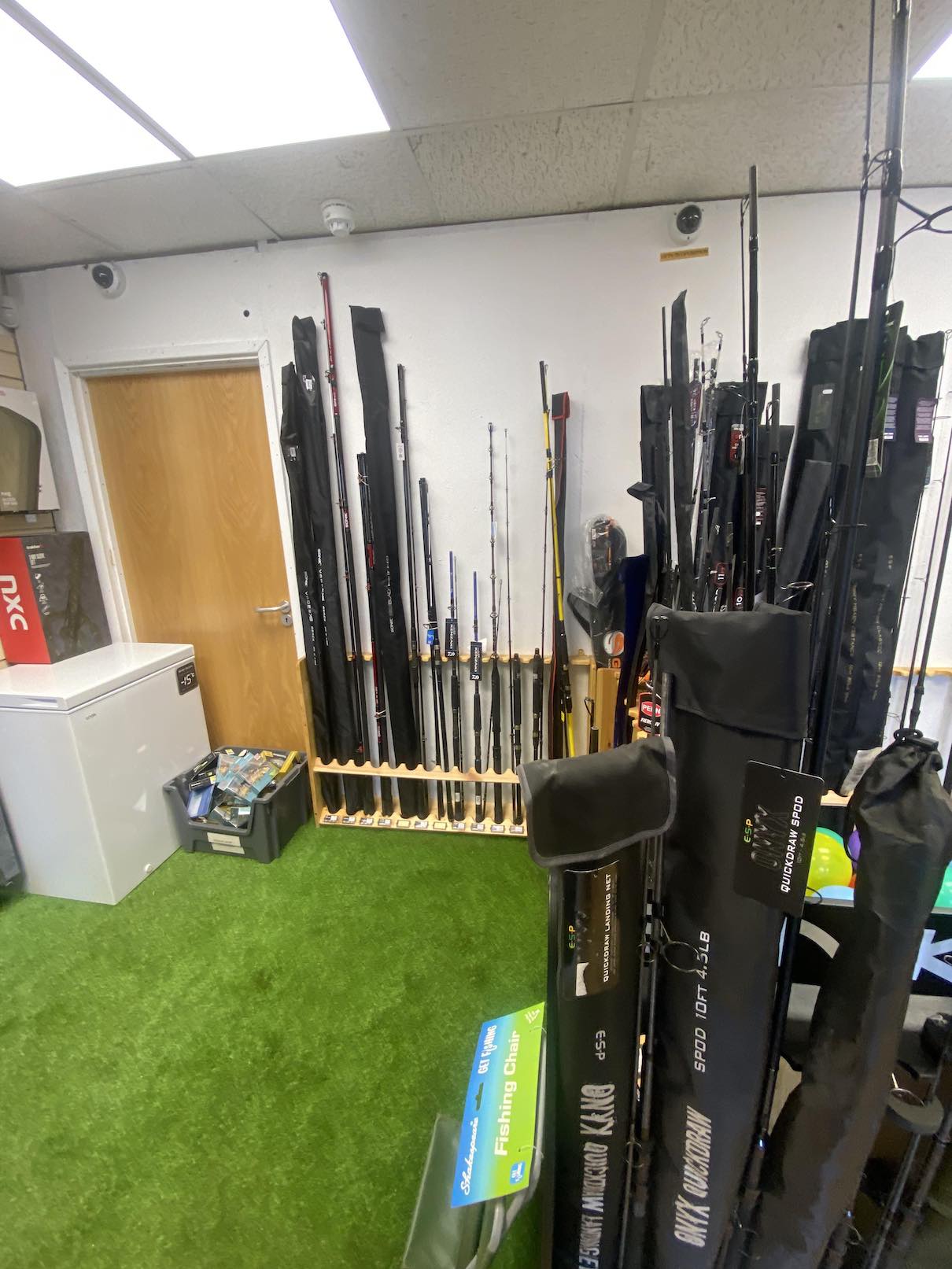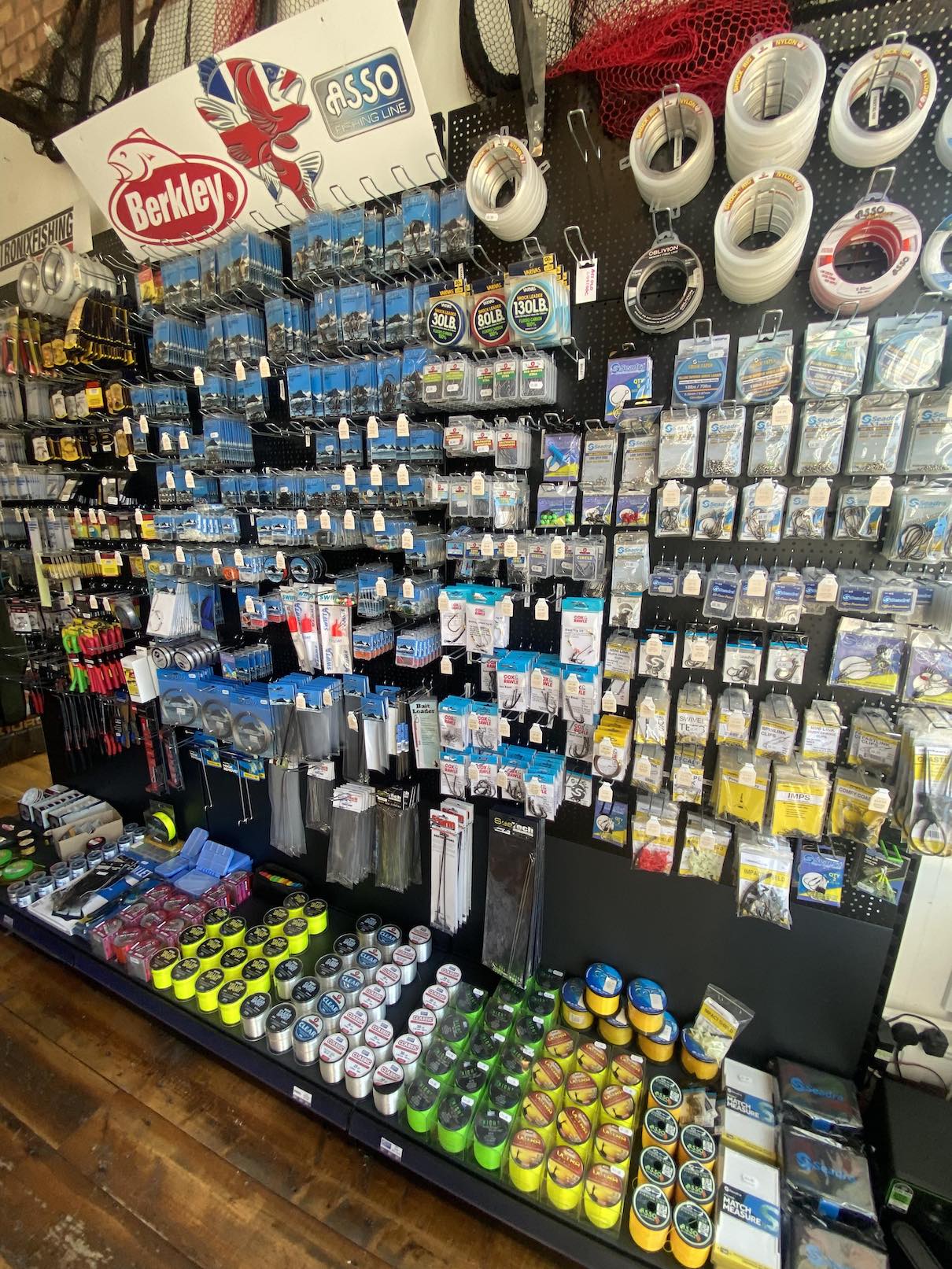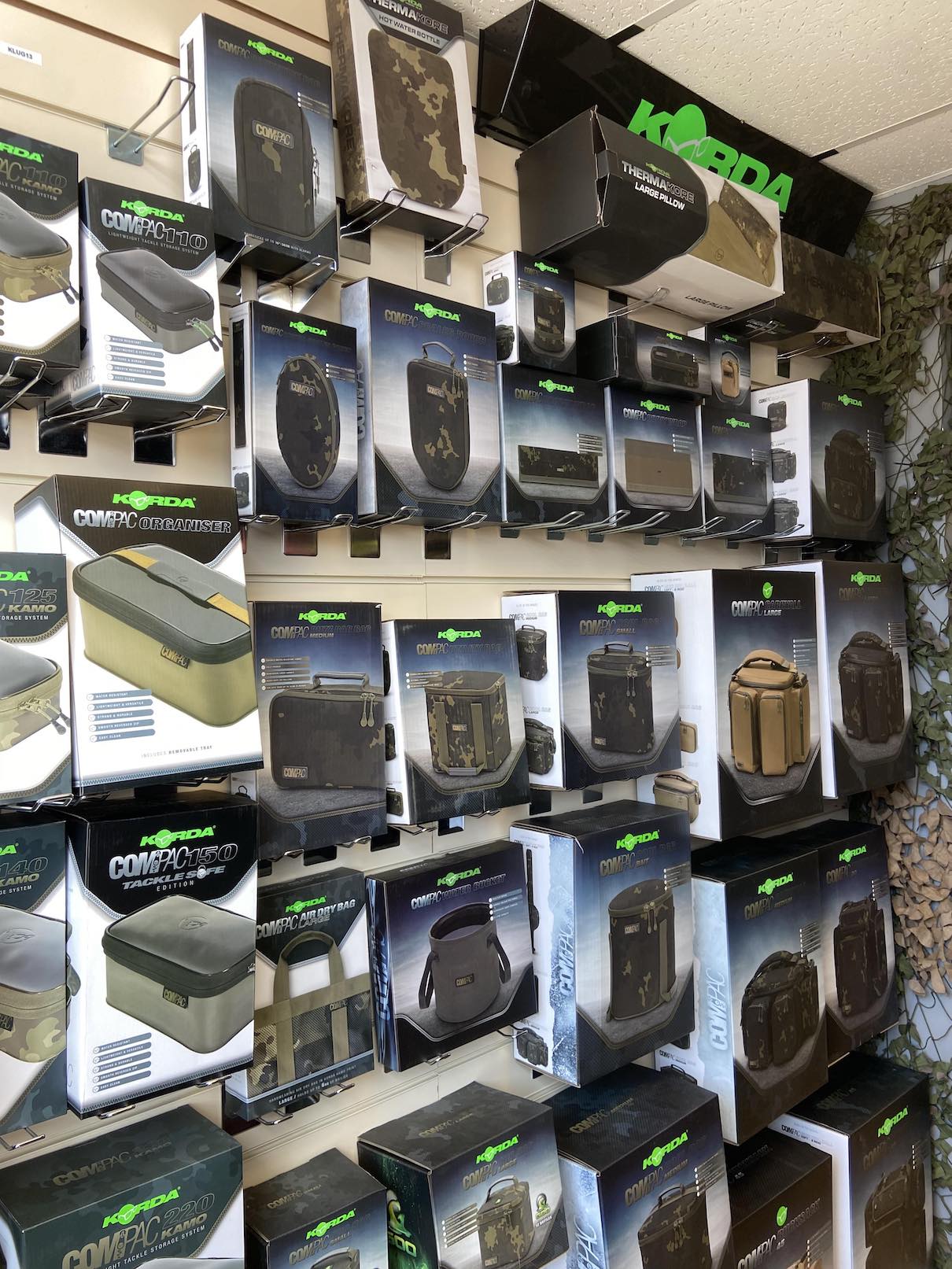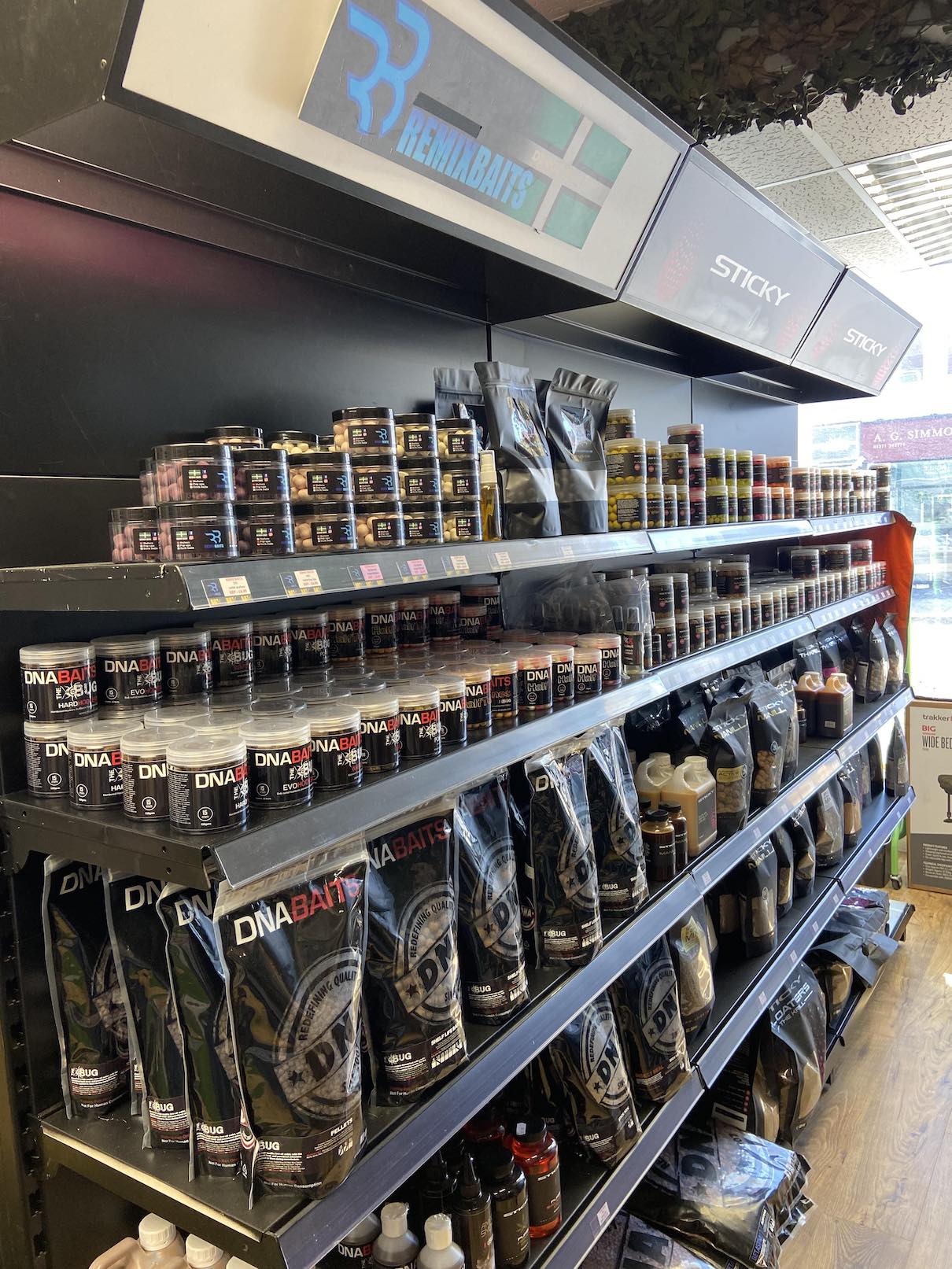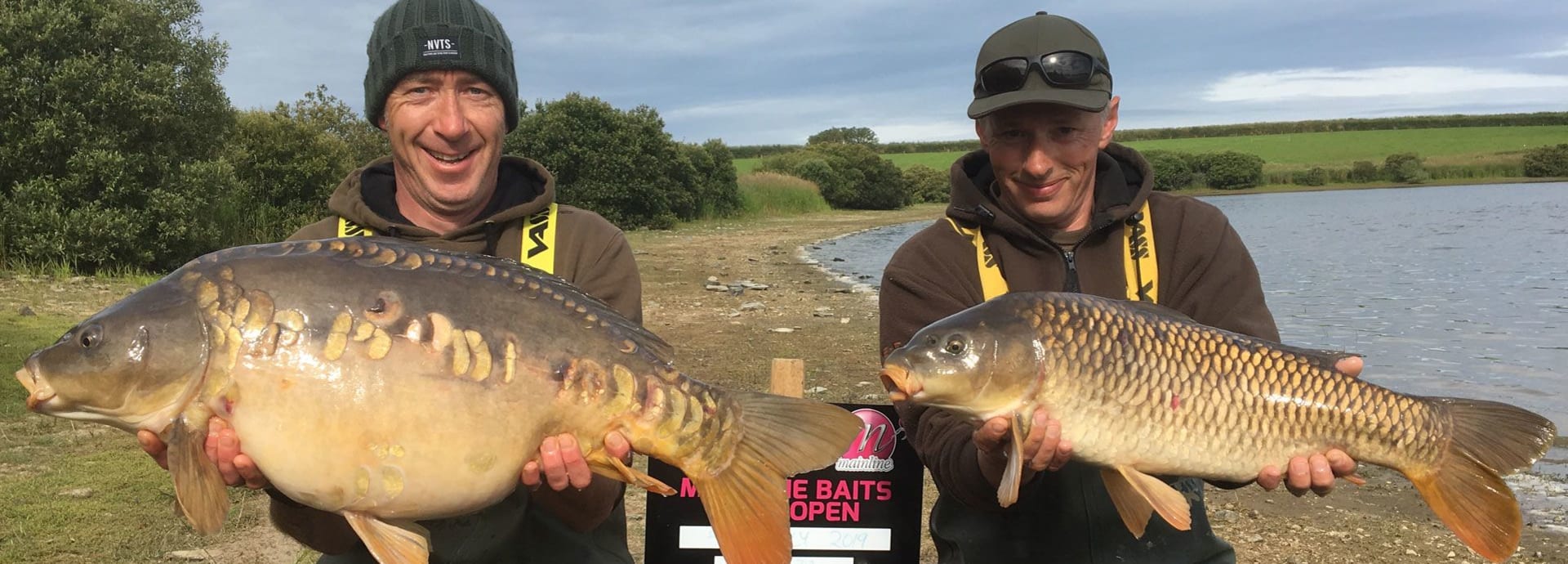Many thanks to my good friend Bruce Elston for sending North Devon & Exmoor Angling News a full report on their trip to Anglers Paradise. Whilst I was unable to attend due to grandad duties I was very much there in spirit and watched developments keenly on our Watts-App group.
It was with much anticipation that a motley crew of like minded anglers assembled at my place for breakfast, prior to annual cat fishing trip on carp and cat 2 at Elderado. This was to be our fifth year targeting the catfish on this prolific lake and we always have a lot of laughs with a few nice fish thrown in along the way.
Unfortunately Wayne Thomas couldn’t make it this year so Noel Jones readily agreed to take his place.
With the bacon and egg butties and copious amounts of tea and coffee consumed we set about allotting swims by pulling names out of a hat. Unfortunately for Johnny ‘Fat bloke’ Hughes he drew the short straw and had to fish with me!
This year we had been lucky with the weather. With the lake booked months in advance, it is always a worry but with hot and sunny conditions forecast for the 48 hours of fishing we had ahead of us, things looked good. I have always found found this to be good conditions for tempting our whiskered friends.
Arriving at the lake we noticed a few carp spawning which was not ideal. Hopefully our large baits and agricultural tackle needed to tame the large catfish that reside here , would put off any carp fancying a snack after their amorous endeavours.
Barrow loads of gear were quickly deposited in our allotted swims. Well, quickly might be a bit of an exaggeration for this mostly retired and less than spritely bunch of old duffers! Anyway, eventually we were all settled in our swims and sat back in the sunshine awaiting events.
It wasn’t long before I spied a bent rod across the water and Tony Ball was playing the first cat of the session. Only a kitten
at around 8 pounds but it was a good start and fair play to the old fella for thinking outside the box and trying out a float paternoster
fished with worms.
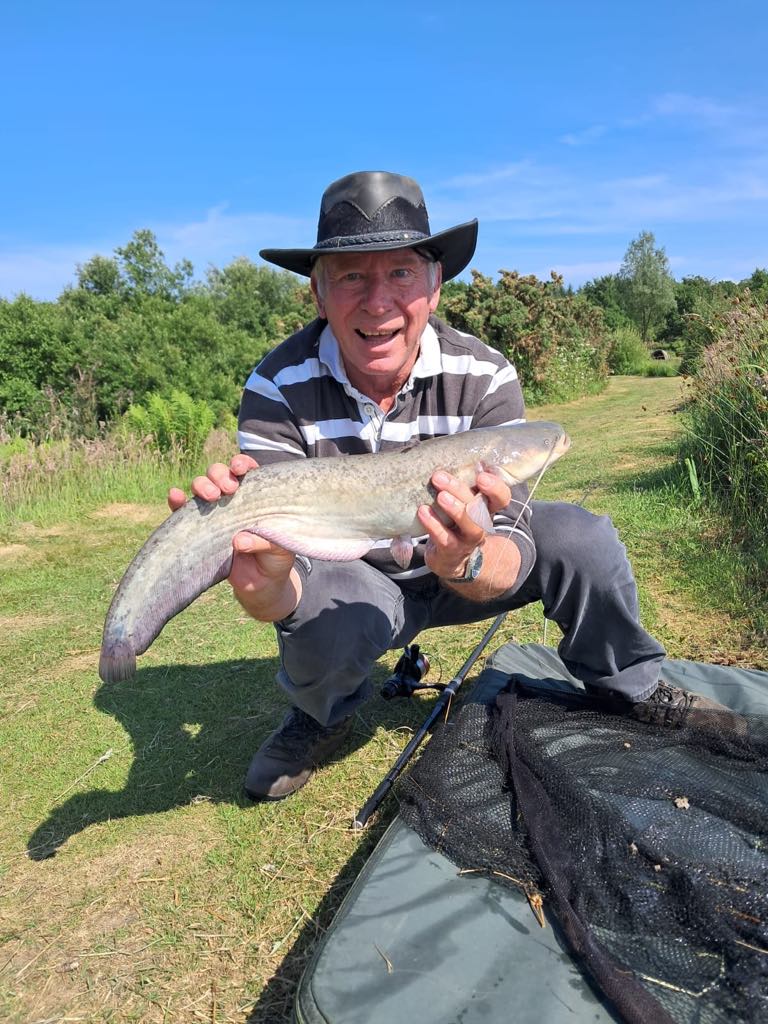
Soon after Alan Palmer also landed a Kitten of a similar size, this was closely followed by a 29 pounder also to Mr Palmer.
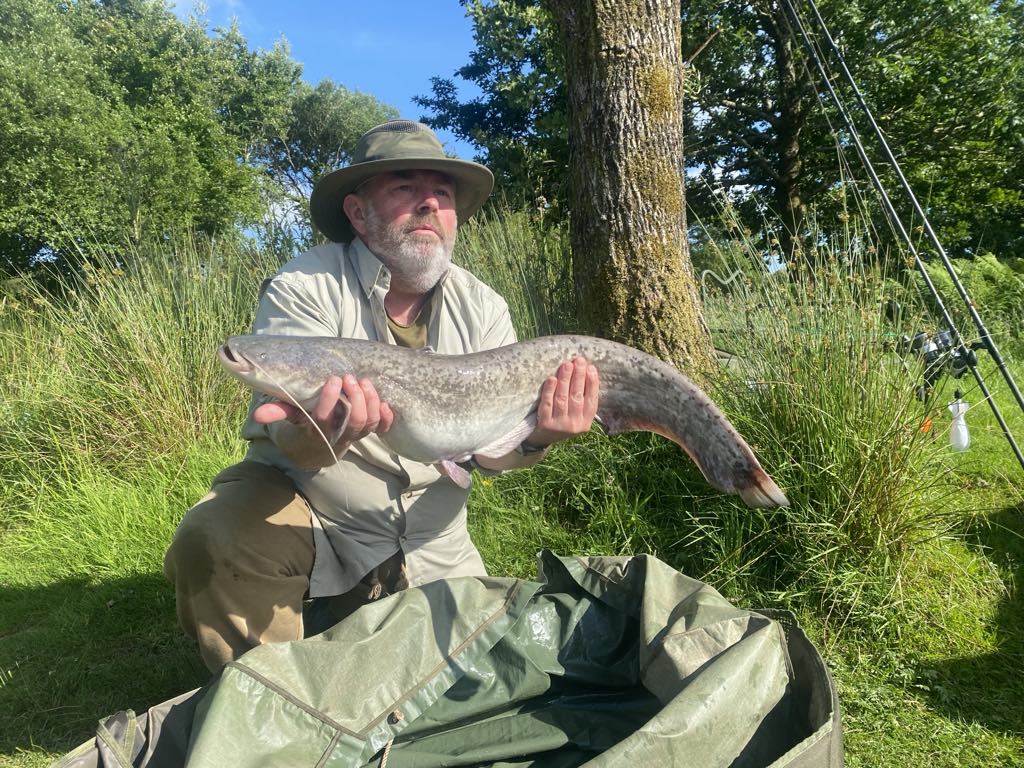
Things were looking good and got even better when my alarm sounded and I was suddenly attracted to something that was intent on pulling my arm off. The cats have got bigger and bigger, year on year in this lake and this was definitely one of the bigger ones! Bitter experience of lost fish making it to snags or taking me around islands have meant that I have upgraded the gear I have been using to try and tame these beasts. Despite now using 30lb line, 3 1/2lb test Armorlites and big pit reels the big ones still lead you a merry dance. This one was no exception and decided it wanted to visit Noel in the swim further up the lake to my left. Eventually it came around to my way of thinking and a nice cat of 40lb 8oz was juggled into
the net by Fatty Hughes.
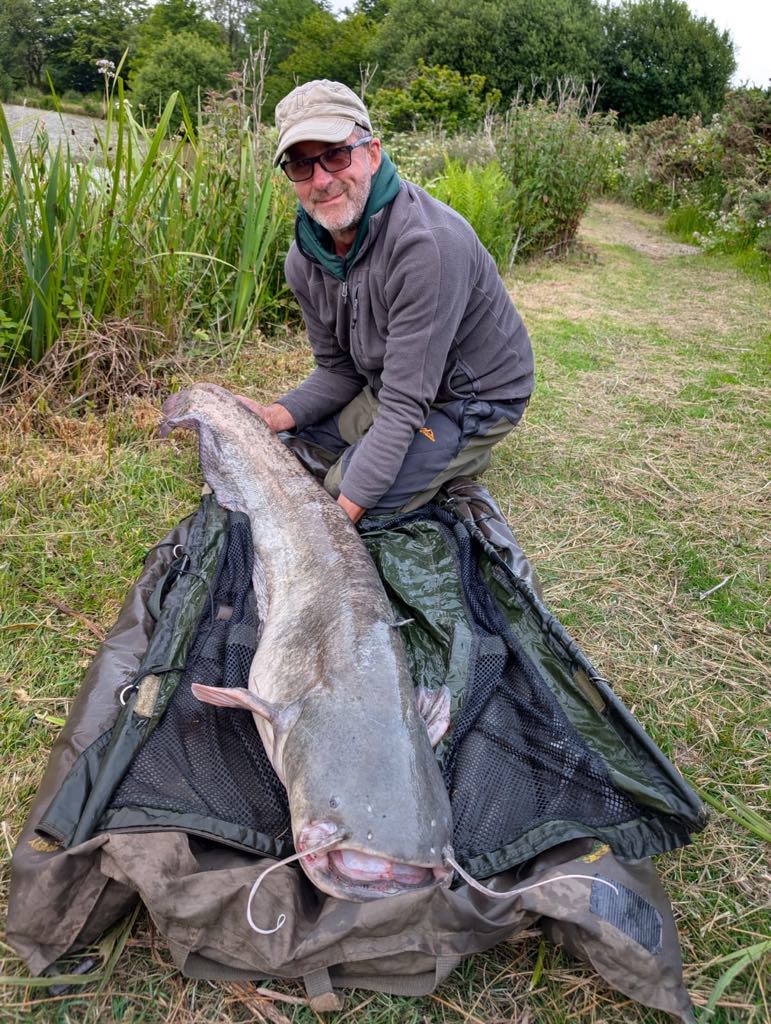
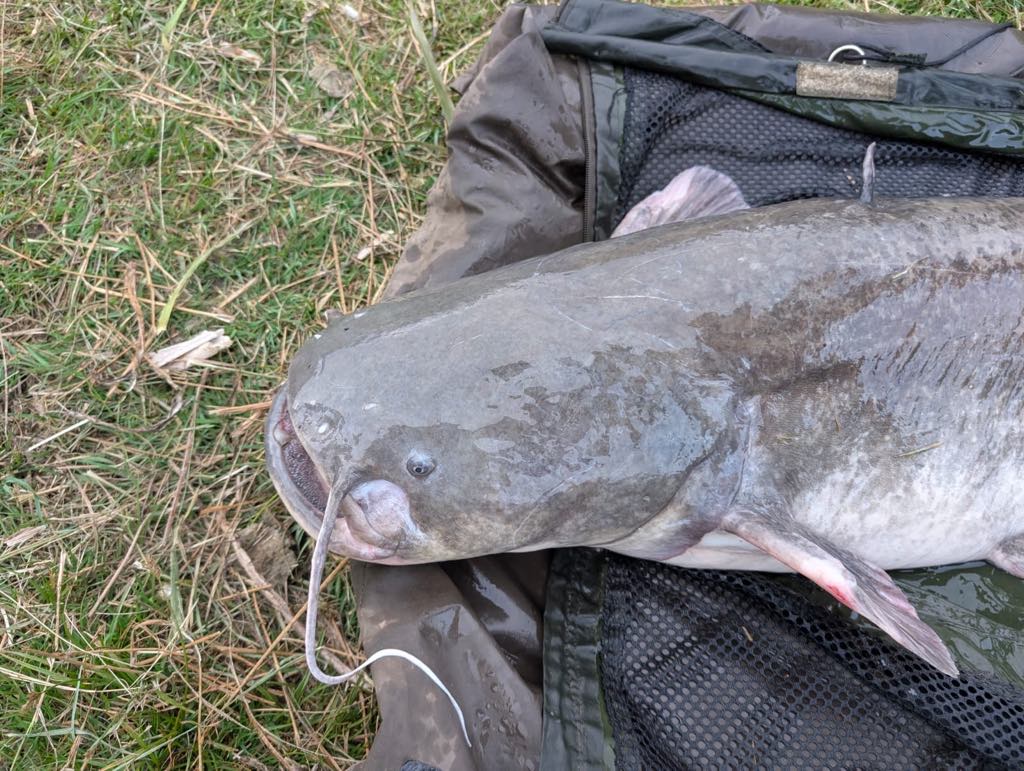
The action continued with Richard ’Bully’ Bull landing a 20.12.
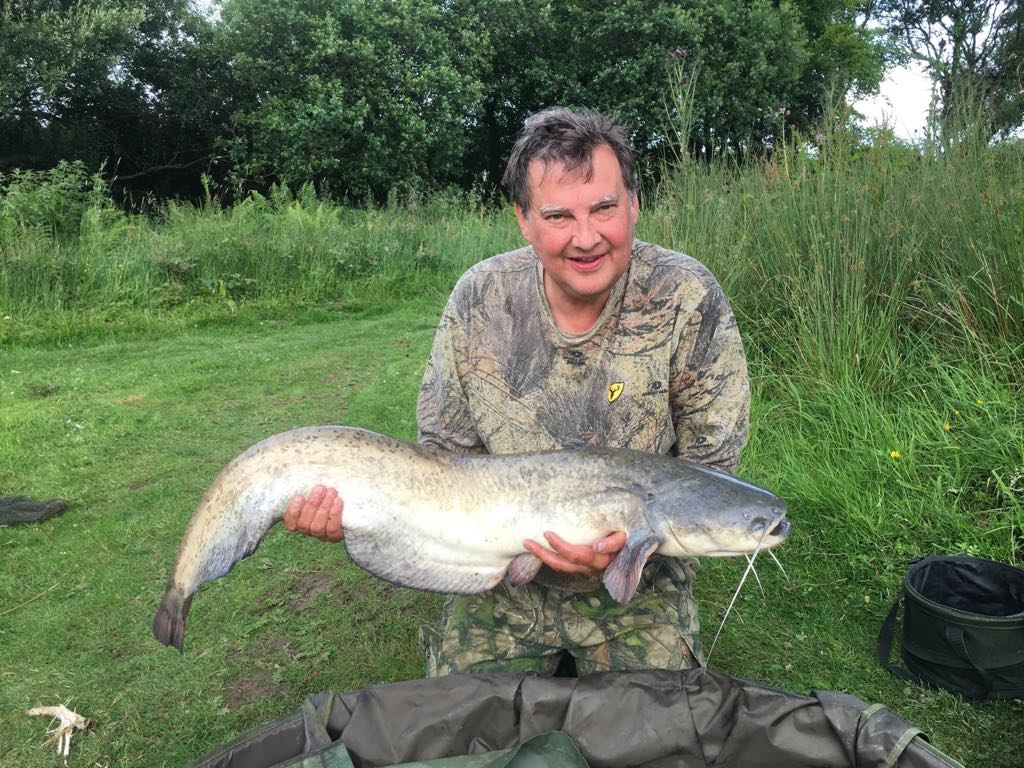
The cats were definitely on the munch and we were all expecting a busy night but apart from a couple of lost fish and a 15 for Bully it was relatively quiet. Oh, and Fatty Hughes had a micro cat on worms popped up to just under the surface.
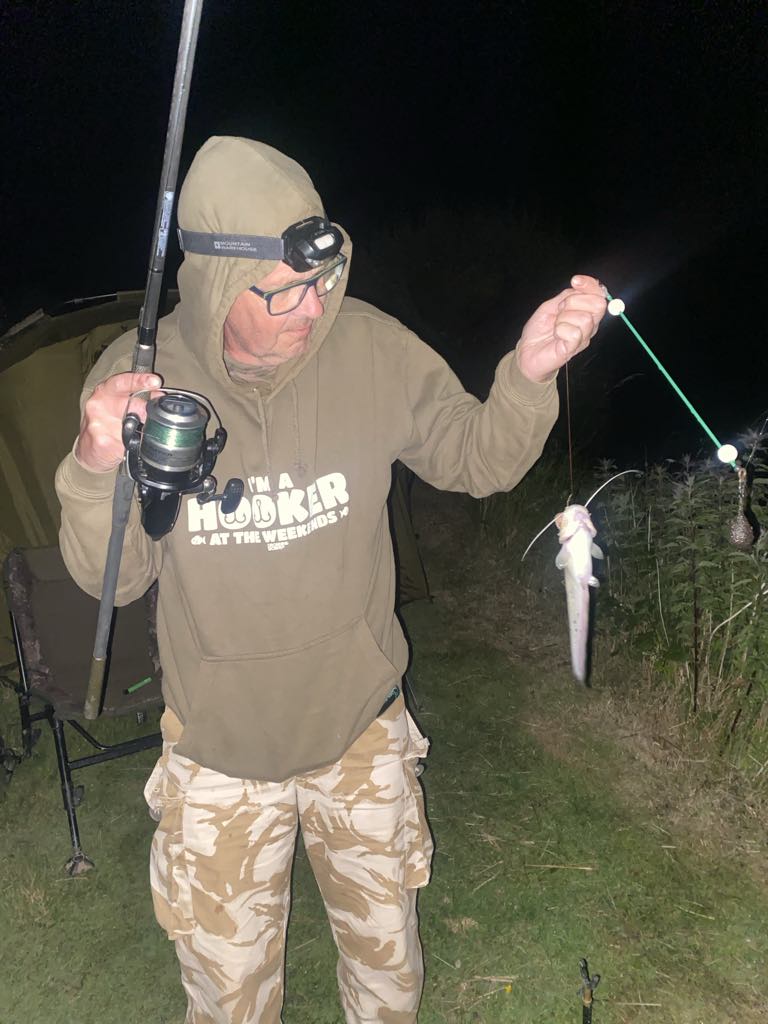
As the new day dawned, Noel was woken by lovely looking common carp that took a liking for a half tin of luncheon meat which was soon outgunned on the heavy gear and sent back on its merry way.
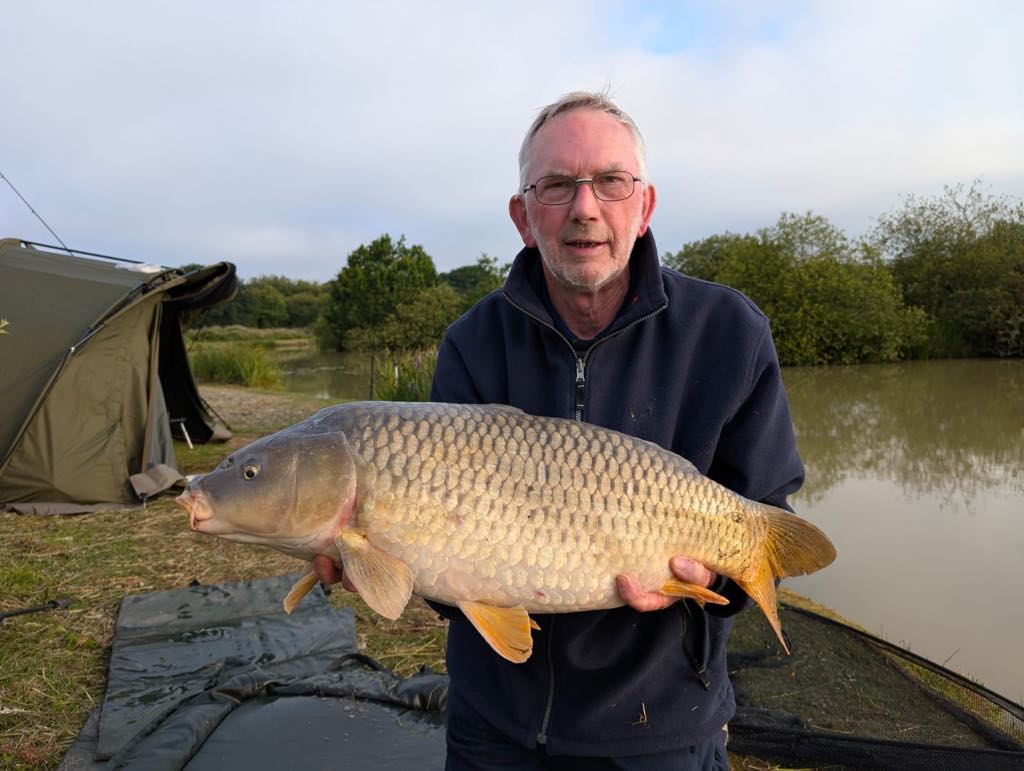
Father and son Team, Mitch and Ben Andrews had been quiet (at least fish wise up to this point) but this was about to change. Ben stole the show on day two with two nice fish of 30.08 and 32.14.
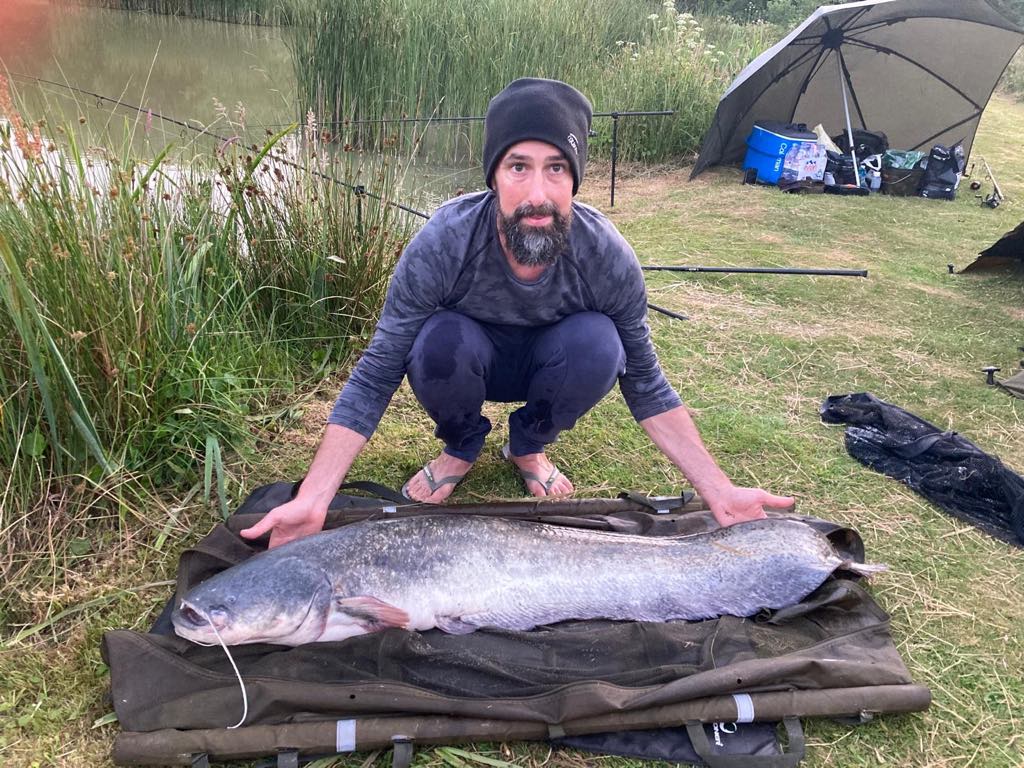

As the second night descend on us we could hear the call of a Nightjar nearby but Mitch spoilt the moment by declaring that it was in fact a farting Walrus.
Mitch has had some nice cats in the past but has not had the best of luck on our annual trips so we were all rooting for him as time was starting to run out on the session. Thankfully at 10.45 his bite alarm sounded and this time he wasn’t to be denied and after a spirited battle a 22 pounder was his.
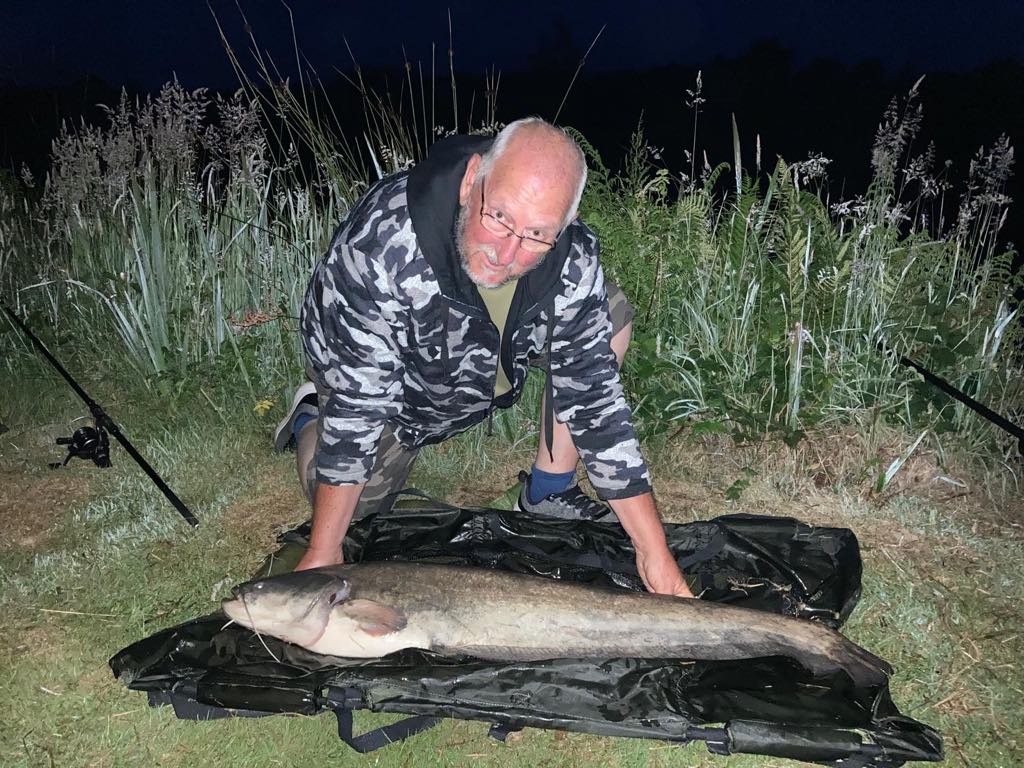
Several other cats were landed in the night including a 28 for Alan, a 27 for Ben and a 24 just before the first light for me.
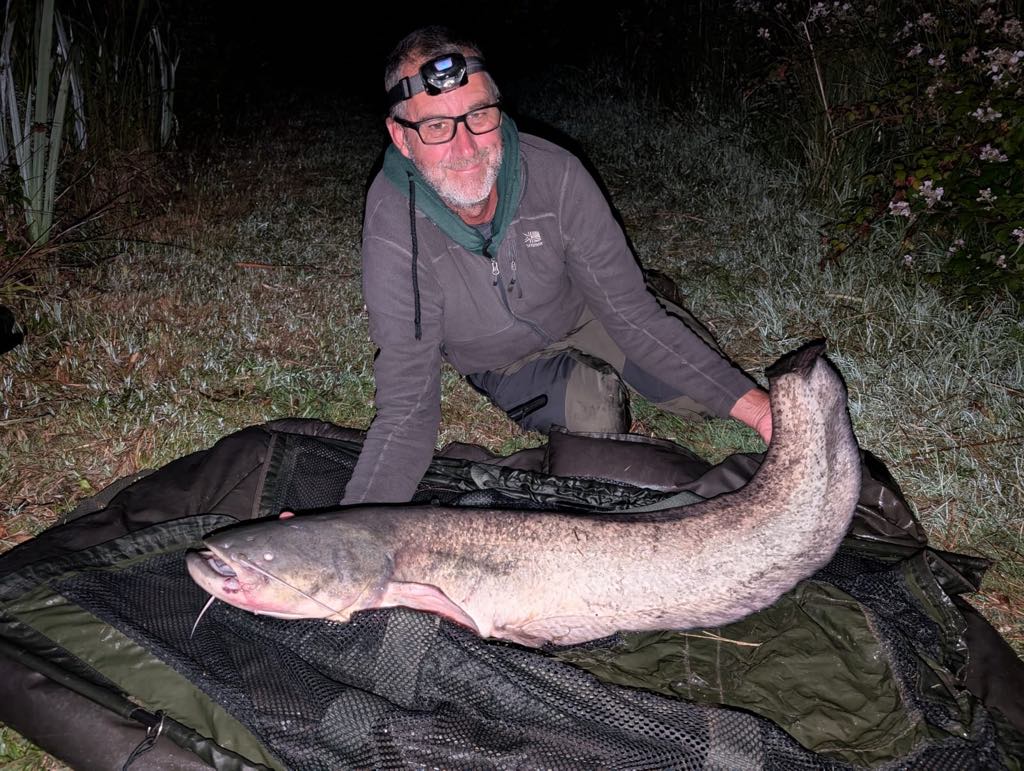
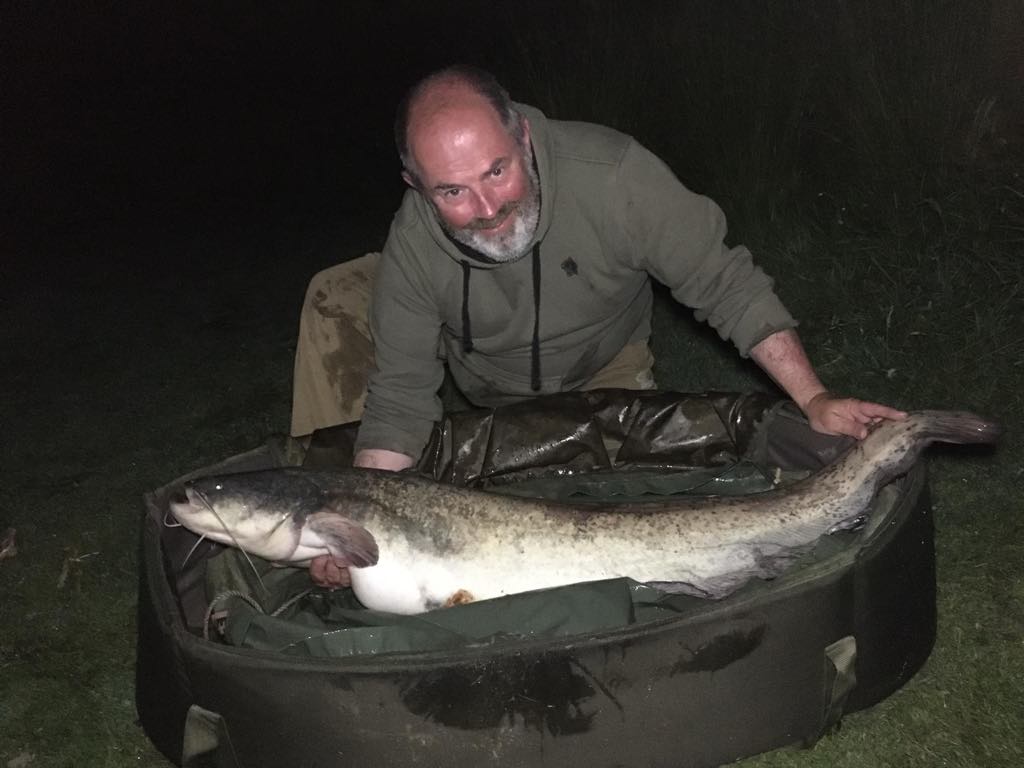
Fatty contributed to proceedings with another micro cat on worms.
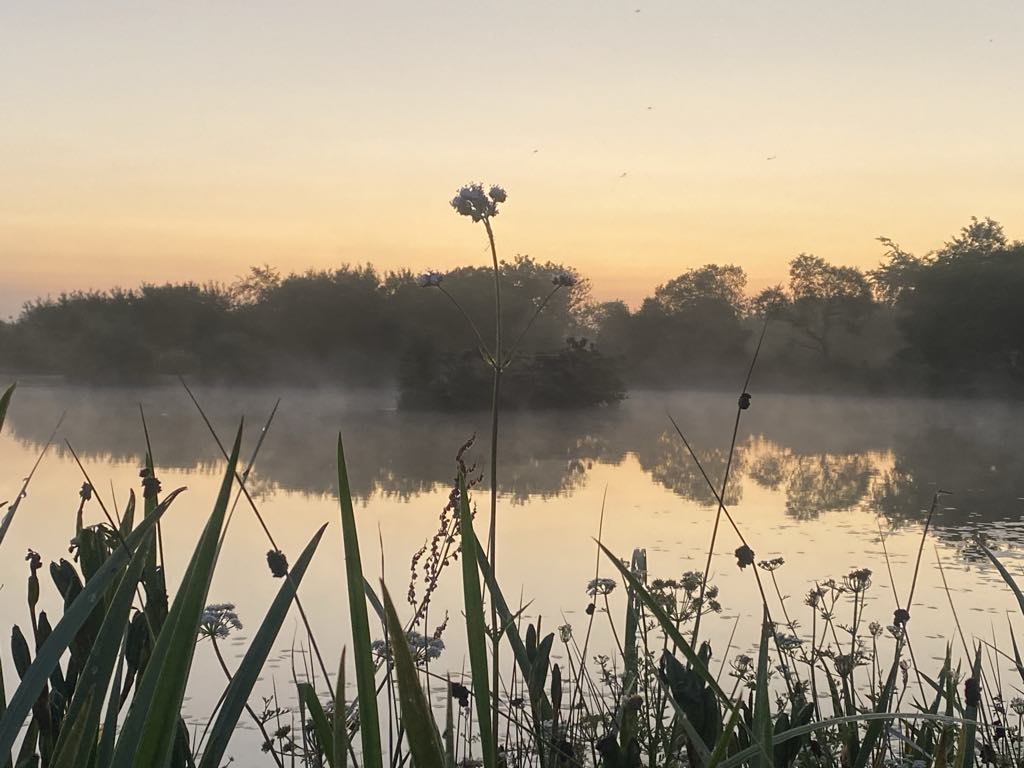
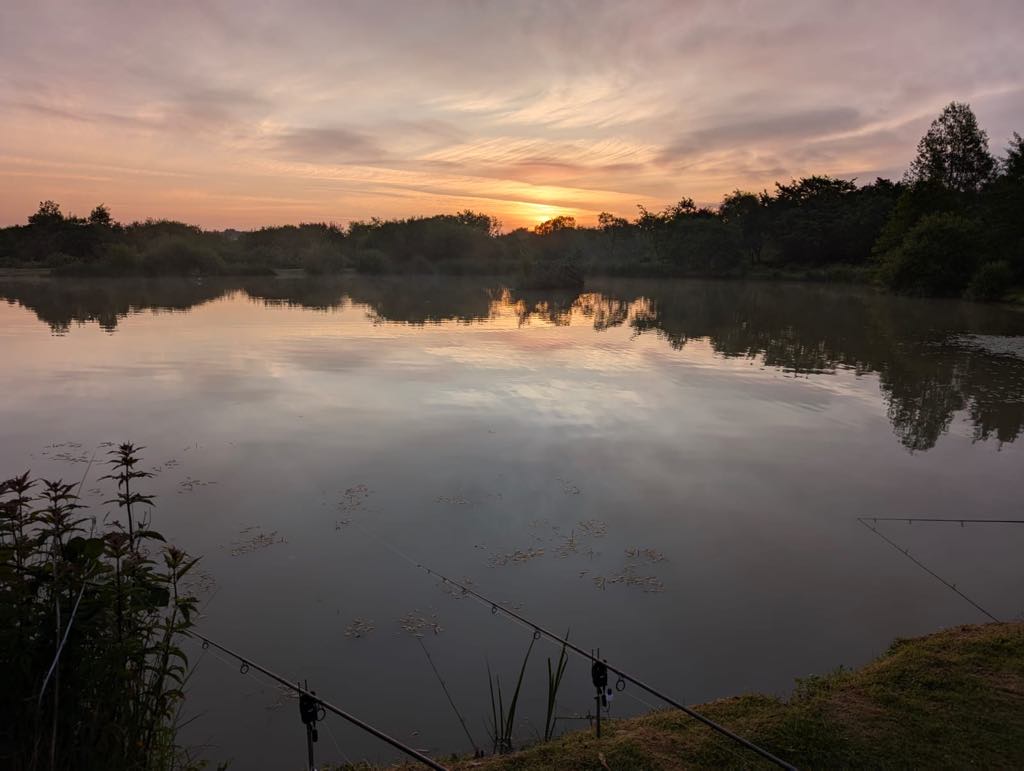
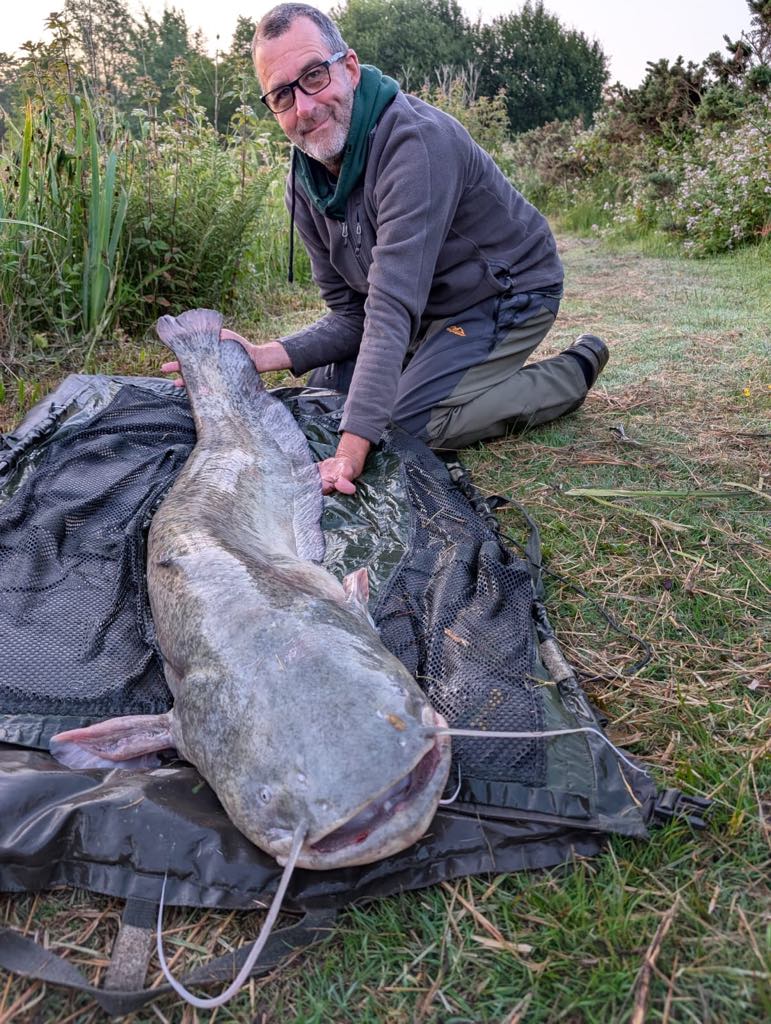
As the new day dawned with mist rising off the water my Alarm sounded for the last time and I was blessed with another 40 pounder to cap off what had been a fabulous trip. Unfortunately Elderado had a sting in its tail for poor Noel as despite the heavy gear he was using and not fishing too close to the snags a big fish managed to get into some sunken branches on the far bank just as he was about to pack up.
Still it was a great trip and fun was had by the old fogeys and a fitting end to our Elderado adventures. I say end as it is rumoured that it will not be available for day tickets next year. I had better make hay…
